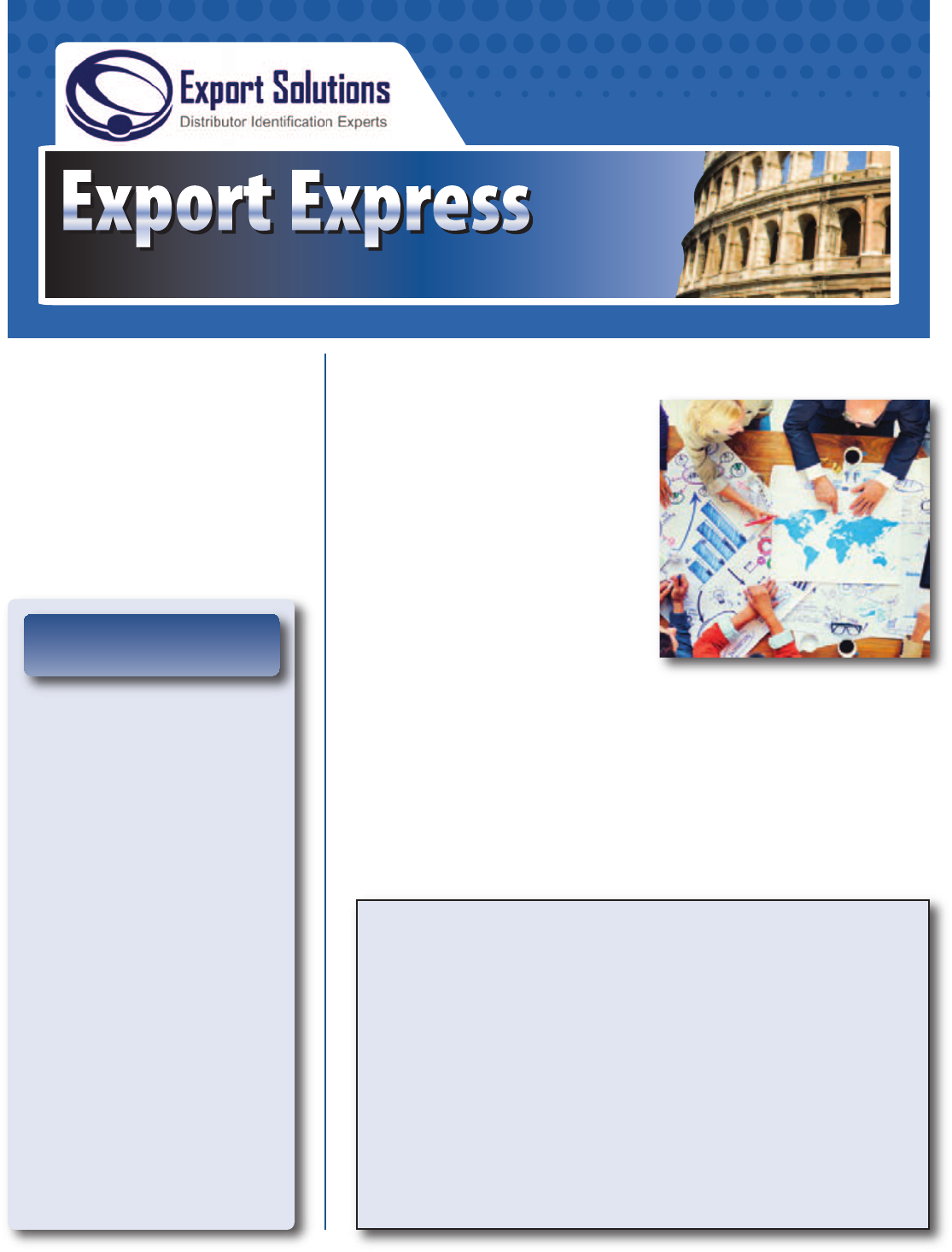
Insights to Accelerate International Expansion
New Distributor
Cooperation Model Guide
Our Mission: Help Manufacturers “Spend time Selling to Distributors versus Searching for Distributors”
In This Issue
Sell to 96 Countries
Looking for new customers and
distributors in international markets?
Export Solutions’ distributor database
covers more than 9,200 distributors in
96 countries. Our database features
extensive coverage of leading food,
confectionery, and beverage distributors.
New! Export Solutions’ retailer database
now tracks 2,700 retailers in 96 countries.
Order now at www.exportsolutions.com.
Good news! You’ve just met a
promising new distributor candidate
(or two) for a top priority expansion
country. A high level of enthusiasm
exists from both sides, but many
questions need answers prior to a
confirmed agreement. Experienced
export managers can confirm a long
road from a positive first meeting to
securing an initial order and distributor
commitment to a serious launch plan.
Export Solutions helps to answer the
question “Where do we go from here?”
“Cooperation Model” is a term that we
assign to describe the follow up process
from initial meeting to formal
agreement. This includes our “10 C”
method of developing the joint work
plan. These action steps include
preparation of a year one plan and
costs, understanding the proposed
value chain, and consumer marketing
plan. Another essential element is the
establishment of a year one scorecard
identifying shared business objectives.
Export Solutions has participated in
more than 300 distributor search projects
on six continents. This includes more
than 50 distributor interviews per year.
We believe that a clear Cooperation
Model is the critical decision point
in selecting your preferred partner.
The Cooperation Model establishes
a road map to translate “Export Dreams
to Retail Reality.”
New Distributor – Cooperation Model
1. What is the year one business plan?
Investments required?
2. What is the proposed value chain?
Factory gate to store shelf?
3. Who is my brand manager or first point of contact?
4. What is the calendar of milestones through
consumer launch?
5. What mutual goals are established in
a year one scorecard?
Greg's Guidance: Cooperation Model
Page 6
10 C’s – Cooperation Model
Page 11
Ten Questions:
Developing your Cooperation Model
Page 13
What Distributors Want to Know ?
Page 14
Price is Right?
Page 27
5 Steps: From Niche Status to
Mass Market Success
Page 31
Distributor Capability Assessment
Page 36
Who Is My Team?
Page 37
Who is Your Brand Champion?
Page 41
FAQ’s – Retailer Database
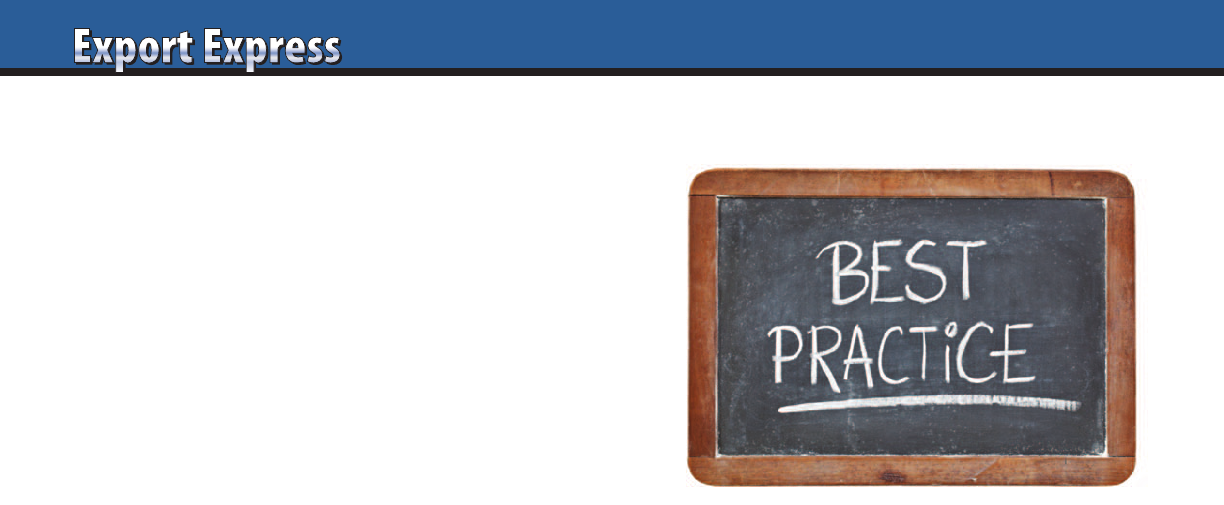
2
Have you ever experienced an incredible
first meeting with a distributor? Strong
alignment, good fit, everyone smiling,
timelines agreed. Then, nothing happens!
The export manager may take up to six
months to translate his outlook from
“done deal” to “dead deal.” There are
two reasons why this occurs.
First, distributors are positive,
competitive athletes, always striving
to win new business. However, in some
cases, the distributors wake up after time
to reflect and decide they really weren’t
that interested in the brand after all.
Failure also results when a strong
first personal meeting at a trade show
or distributors office is followed by
a relationship buried in email
communication, with no personal touch.
Below are Export Solutions’ Ten Tips on
converting promising new business leads
into tangible business partnerships.
1. Zoom/Teams – Don’t Depend on Email
Motivated distributors still return phone
calls, but frequently receive up to 200
emails a day, many from existing brand
partners. Top distributors’ business days
are captured by a continuous flow of
meetings with customers, principals,
and their own employees. Best bet is to
call a potential partner or set up Zoom
meetings. Email is okay for routine
correspondence, but too easy to ignore
or delete.
2. Follow Up Immediately & Frequently
Time slips away, as Export Managers
focus on existing businesses and
“problems of the day.” One tip is to
put regular follow up reminders on
your computer calendar.
3. Focus on 10 C’s: Category Review,
Calculation, Cost of Plan, Compliance,
Contract, etc.
Described below are critical elements to
translate a “lead” into shipments.
Category Review: How does your
category look in target country? Category
size, competition,pricing,margins, and
merchandising activity.
Calculation: What is the distributor’s
proposed calculation from your factory
gate to the store shelf? What are standard
costs like duties and taxes? What are
flexible or negotiable like trade discounts
and distributor margin?
Cost of Plan: Each brand needs a plan
to gain market entry. This includes key
account “sell in,”
followed by consumer
and trade promotion
activities. Look at the
distributor’s proposed
plan, as well as several
options with different
price tags.
Compliance: Many
countries feature a
product registration
process and labeling
requirements. In some
countries, this step is
easy with automatic
compliance for a USA
or European brand. Or a
simple solution with a small distributor
applied sticker. In other countries like
Japan or Indonesia, plan on one year or
more to navigate the complex process.
Contract: “Ready, Set, Go” can be delayed
by 3-6 months due to contract negotiations.
Company lawyers demand 20 page
agreements in English that even the
Brits can’t understand. Distributors
prefer two page letters of understanding
or a handshake deal. Do what is right
for your business, but expect delays
and frustration.
4. Request References
A good idea is to quickly request
distributor references from other brands
they handle. Motivated distributors will
send impressive references right away.
Also, have your credit department run
a Dun and Bradstreet or Equifax report
as soon as possible. Many trade show
meetings are with “pretenders” who state
exaggerated claims and are ultimately too
small to handle your brand. Better to
discover this sooner versus later.
5. Move Beyond the Distributor Owner/MD
The distributor owner “writes the
checks,” but frequently serves as a
“bottleneck.” The key is to quickly get
your brand assigned to a “worker” whose
task is to move your project through the
system and produce an order!
6. Establish Realistic Timelines
Sync with category review dates and avoid
holiday periods. Update timelines
frequently. New distributor relationships
always take longer. Plan on six months
from first meeting to first shipment. Be
pleasantly surprised if things move quicker.
7. Distributor Response Time
Signals Interest Level
How often do you check your emails?
Probably every hour. When I work
on distributor search projects for well
known brands like Pringles, Tabasco,
or Barilla, distributor response is
lightening fast. Motivated distributors
will chase you if they are interested
because they are anxious to start selling
your brand!
8. Establish Regular Checkpoint Calls
I suggest every two weeks at a
minimum. Use a common document of
priorities, action steps, and due dates.
9. Visit the Distributor
It’s amazing the amount of progress
that will be made during a meeting
at the distributor’s office. Also, the
distributor will work hard in advance of
your visit as your project moves up the
priority list and they want to guarantee
a favorable impression. A visit to the
distributor’s market signals your
commitment. Beware if the distributor
is reluctant to schedule your visit. Either
he has changed his mind about a
partnership or his office and capabilities
do not match the bold promises made at
the initial trade show meeting.
10. Parallel Path Two Candidates per Country
A favorable first meeting represents an
excellent start. However, there are still
many steps (think 10 C’s in point 3)
before you sign a contract and receive
your first order. Always keep two
candidates in the process, in case your
top choice disappoints. This can be
tough, but represents a better option
than needing to start the entire process
over again.
Ten Tips: Converting Promising Leads to New Partnerships
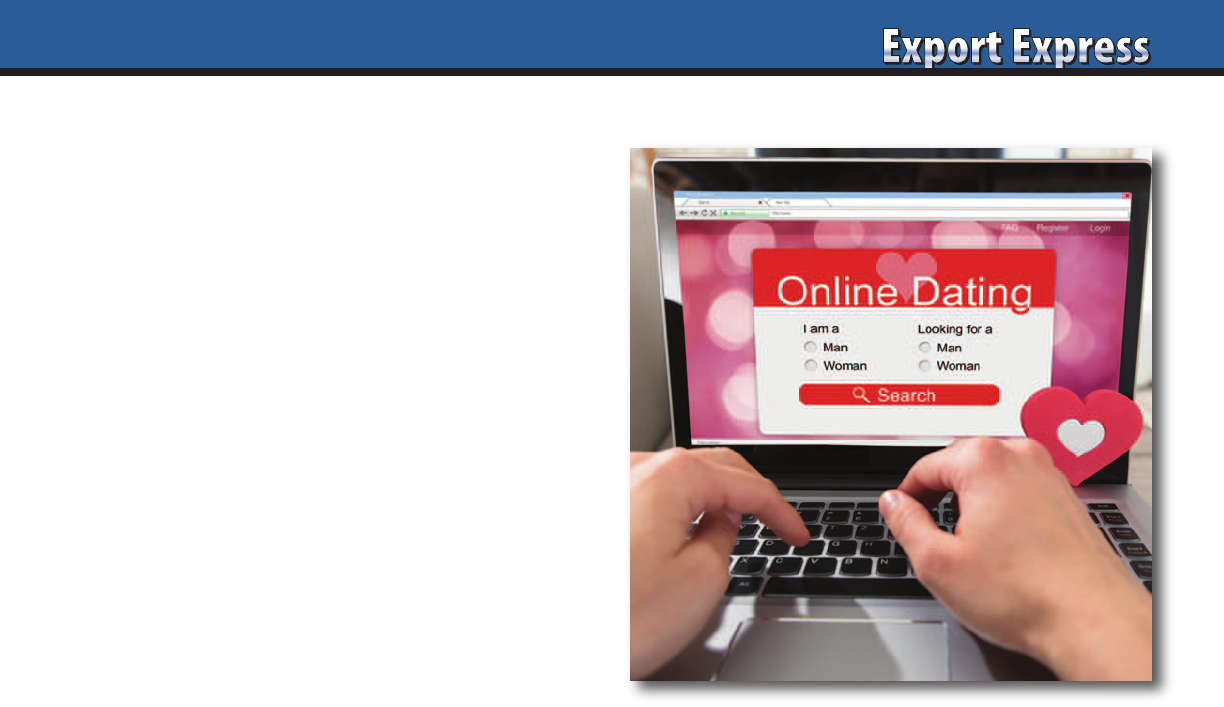
3
How do you sign new distributors without traveling and
trade shows? The export community is rushing to virtual trade
shows as a new tool. Leading distributors are already past the
early novelty of online “blind dates.” What are the new rules
of online distributor dating? View Export Solutions’ 10 tips for
a successful “match.”
1. Are You a Good Fit For Each Other?
The process of exporter and distributor linkage is frequently
random, with little thought to pre-screening for prime prospect
candidates. Our Export Passport system classifies exporters
from level one “start-ups” to level ten multinationals.
Distributors range from one star “pioneers” to five star
“champions.” Exporters should focus on Prime Prospect
distributors that represent a good potential fit based upon
their business aspirations and investment level.
2. What Distributors Want to Know
Create a one page, fact based company profile focused
on “what distributors want to know.” Export managers fill
distributor inboxes with offers loaded with information on
product attributes, but fail to address key issues regarding
brand competitiveness for a country. What is your pricing
strategy relative to competition? How much will you invest
in promotion and media? What is a reasonable size of the prize
for the distributor?
3. Brandscaping – Credentials Makeover
Your website is the first place a potential new distributor will
check before confirming a web meeting. Has your site been
updated to reflect Covid 19 realities? Conduct a credentials
makeover of your web site, company catalog, and standard
presentation. Focus on commercial facts such as your market
share, social media campaigns, and launch model versus bland
promises on superior performance and the claim that you export
to 30 countries.
4. First Date – Casual Coffee
Think of your initial web meeting with a distributor as a first
date for a coffee. Do not try to overwhelm the distributor with
facts and PowerPoints. Send presentations, samples, and your
profile in advance. Devote the “first date” to telling your “brand
story” in a personal way. Share relevant local examples while
supplying a rationale why the distributor and his country
represent a good match with your ambitions.
5. Second Date – Working Lunch
What will the relationship look like if the brand and distributor
decide to work together? Export manager can share a brief
containing their objectives (size of prize), pricing, investment
model, and marketing strategy. Motivated distributors will
design a business plan and questions. These items should
be shared in advance. The second date should be devoted to
talking about the proposed plan and gaining alignment around
key issues.
6. Samples – Essential
A distributor will not buy your product without tasting it. Send
samples in advance. Distributors will be compelled to accept the
virtual meeting at the very least to share local feedback on taste
preference. Include a small gift with your company logo.
7. Online Category Reviews – Local Research
Many top supermarket chains feature e-commerce web shops.
It’s simple to conduct basic overseas category reviews from
the comfort of your home office. This allows you to capture
local category dynamics in advance of your call and validate
distributor performance at leading retailers. Export Solutions’
retailer database tracks more than 2,700 retailers in 96 countries,
with one-click links to retailers web shops as available.
8. YouTube Videos Make You Stand Out
Create a fun 2-3 minute YouTube video. Show your factory,
product range review, and introduce your export team.
Demonstrate your creativity and what an energetic partner
you will be. Balance original content with professional quality.
9. Check Out Their Family
Reference checks are essential with online distributor dating.
Conduct a Google map search to see the distributor’s building.
Check out how many employees they have on Linkedin. See their
depth of product listings on local supermarket web shops. Check
with two or three of their existing suppliers. Run a Dun and
Bradstreet financial check. No company is perfect, but you must
provide extra attention to the due diligence process during this
period of uncertainty.
10. Visit Before the Wedding
Online distributor dating (or Zoomerce) can streamline the
process of new distributor screening. However, nothing replaces
the intimacy of a personal visit to the distributors country. It may
be possible to complete the preliminary “dating” steps online.
However, it may make sense to delay the wedding ceremony
until you can visit the country in person. Divorce is ugly and
costly. As with many couples in love today, it may be better idea
to delay the wedding to enjoy a longer honeymoon. Good luck!
Online Distributor Dating: 2022 Rules
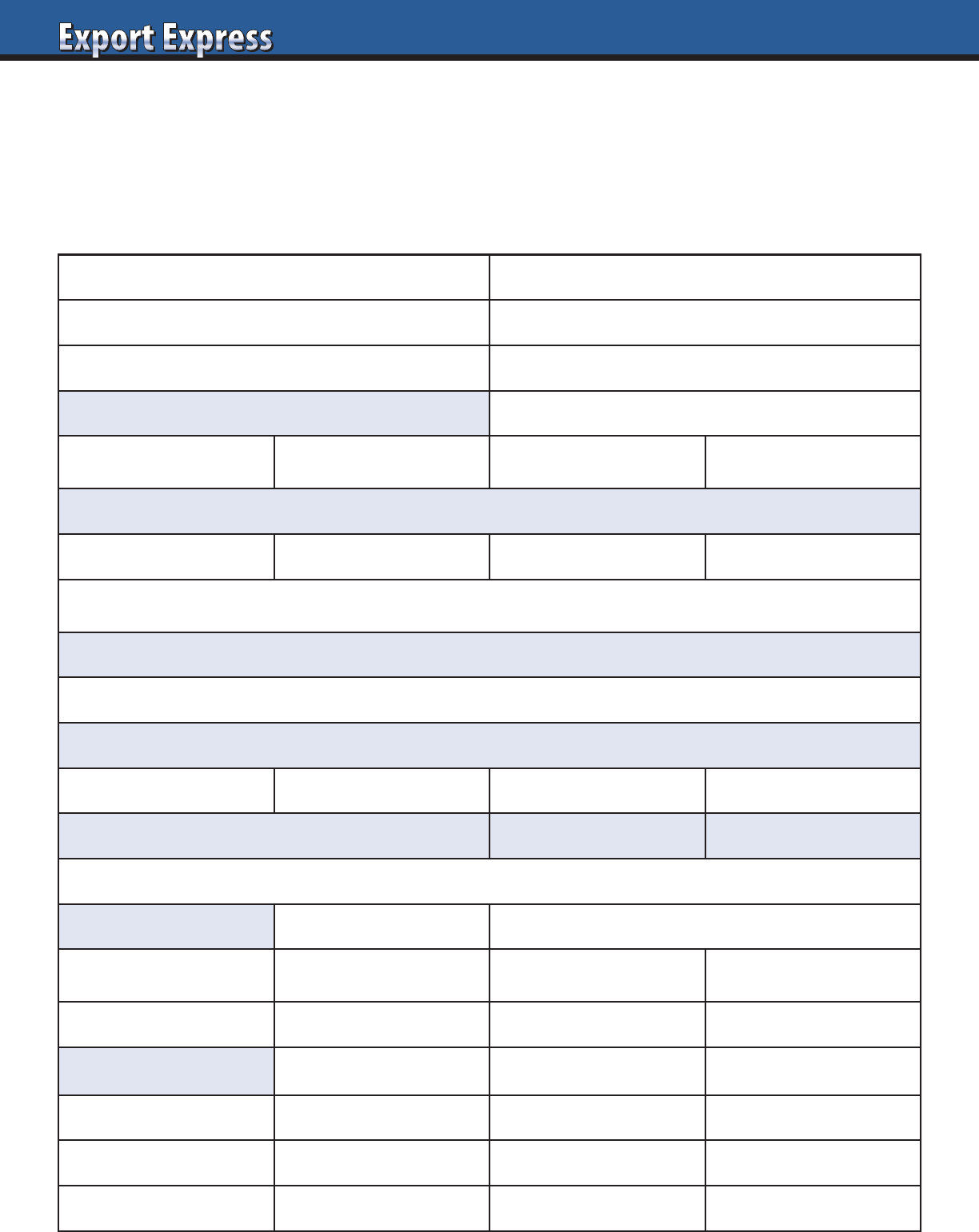
4
Key Contact: Telephone:
Web Site: Email:
Founding Date: Ownership:
Annual Sales: Total Employees:
0-$50 million $50 million - $250 million $250 million- $1 billion $1 billion +
% Sales International:
0-10% 10-25% 26-50% 50% +
Exporter Classification/Description:_________________________ (#1-10, based upon Export Solutions’ scale)
Core Product Range:
Unique Selling Point:
Market Share:
Home Country: Country A: Country B: Country C:
Current Business in Distributor’s Country: Yes/No: Size $:
Current Customers (Distributor’s Country):
Investment Model: Listing Fees*: Yes/No *average $35 per item,per store
Trade Promotion Budget: Dead net price: 10% of sales: Mass:
Marketing: Digital: Sampling: 360 degree:
Ambition/Size of Prize: Sales: Market Share:
Year 1
Year 2
Year 3
Exporter Data Sheet
What Distributors want to Know about Your Company
New Business Opportunity: _____________________________________
(Company Name/Country)
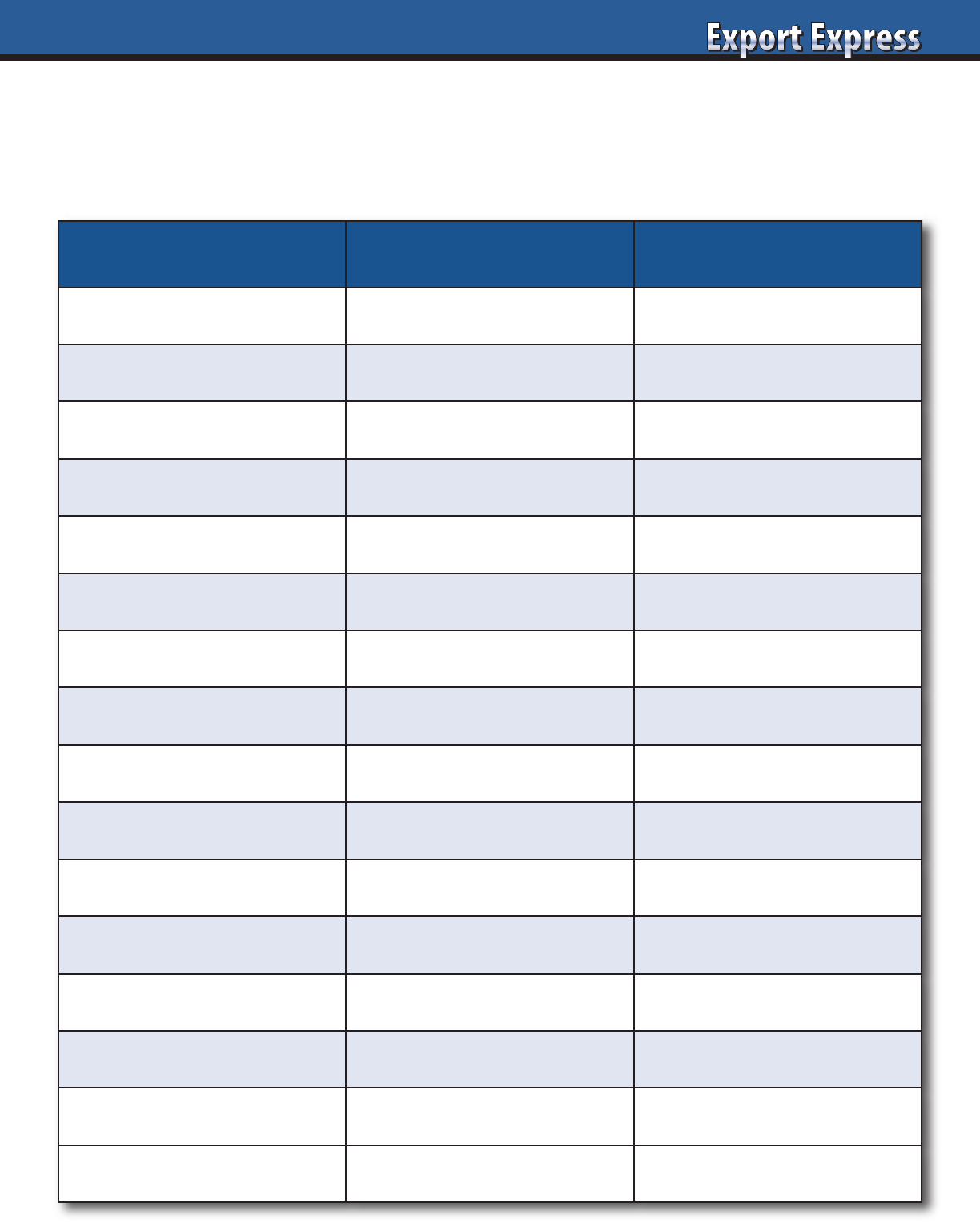
5
Are Distributors Interested in Your Brand?
High Interest Low Interest
Email Response
Immediate reply Delayed or no reply
CEO Engagement
Active participation Delegated to middle management
Scheduling Meeting
Flexible and easy Difficult. Conflicts.
Airport/Hotel Pick-Up
Offers to pick you up Take a taxi!
Meeting Presentation
Tailored. Prepared for you. Standard presentation
Category Research
Obtains data None
Competitive Review
Shares photos: store sets Informal comments
Store Visits
Organized/led by CEO Office meeting only
Samples
Obtains and tries samples Waits for you
Team Participation
3-6 people at meeting One person
Cell Phone
Shares private number Email address only
Questions
Addresses key issues No questions
Timeline
Meets due dates Delays
Post Meeting Follow-up
Immediate and frequent None
Proposed Plan
Detailed and fact based Brief topline
Results Winner Second place?
I have conducted hundreds of distributor interviews for multinational companies: P&G, Nestle, General Mills, Duracell, Lindt, Tabasco,
Barilla, J&J, etc. Distributor candidates all claim enthusiasm and high interest in your brand. See Export Solutions’ checklist of clues to
measure true distributor interest level.
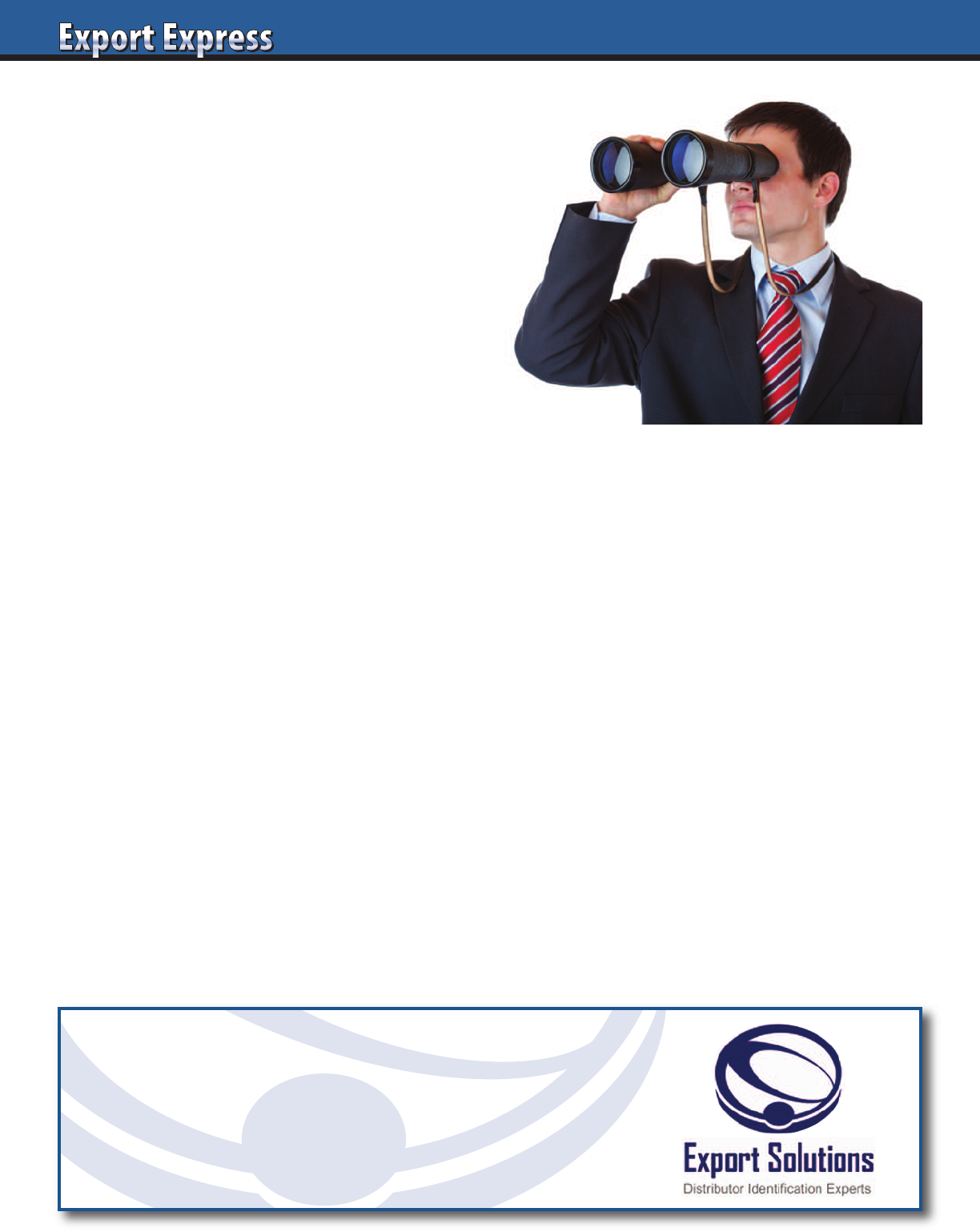
6
1. Case
Manufacturer supplies a business case
confirming brand “aspirations” for the
country: Key items in portfolio, estimated
base pricing, volume/market share
expectations, and investment model.
2. Category Review
Distributor supplies a local review
of category competitors, pricing,
and merchandising practices.
3. Capabilities
Distributor shares detailed organizational
capability and customer coverage.
Could include references from existing
suppliers represented. An important step
when there are two or more candidates
under consideration.
4. Commitment and Costs
What is the Year 1 Plan and Forecast?
Targeted listings, marketing activities,
launch budget and volume estimate
associated with the spending plan.
5. Calculation – Value Chain
Line by line, build up from port to retail store
shelf. Include currency assumptions.
6. Compliance
Highlight product registration and
label requirements. Typical timelines
for compliance?
7. Captain of Team
Who will be our day-to-day brand manager or
first point of contact? Which senior executive
will serve as our “Brand Champion?”
8. Contract
Options include formal contract, letter
of understanding, or handshake deal.
Begin this process early!
9. Consumer Marketing
What are planned activities to generate
consumer trial and repeat purchases?
Trade marketing, consumer marketing,
social media, etc.
10.Calendar /Close
Distributor supplies a detailed timeline of
all activities. When can we expect first order
and delivery to support launch?
Frequent checkpoint calls or meetings.
10 C’s – Cooperation Model
Looking for Good Distributors?
Export Solutions’ database covers
9,200 distributors in 96 countries.
www.exportsolutions.com
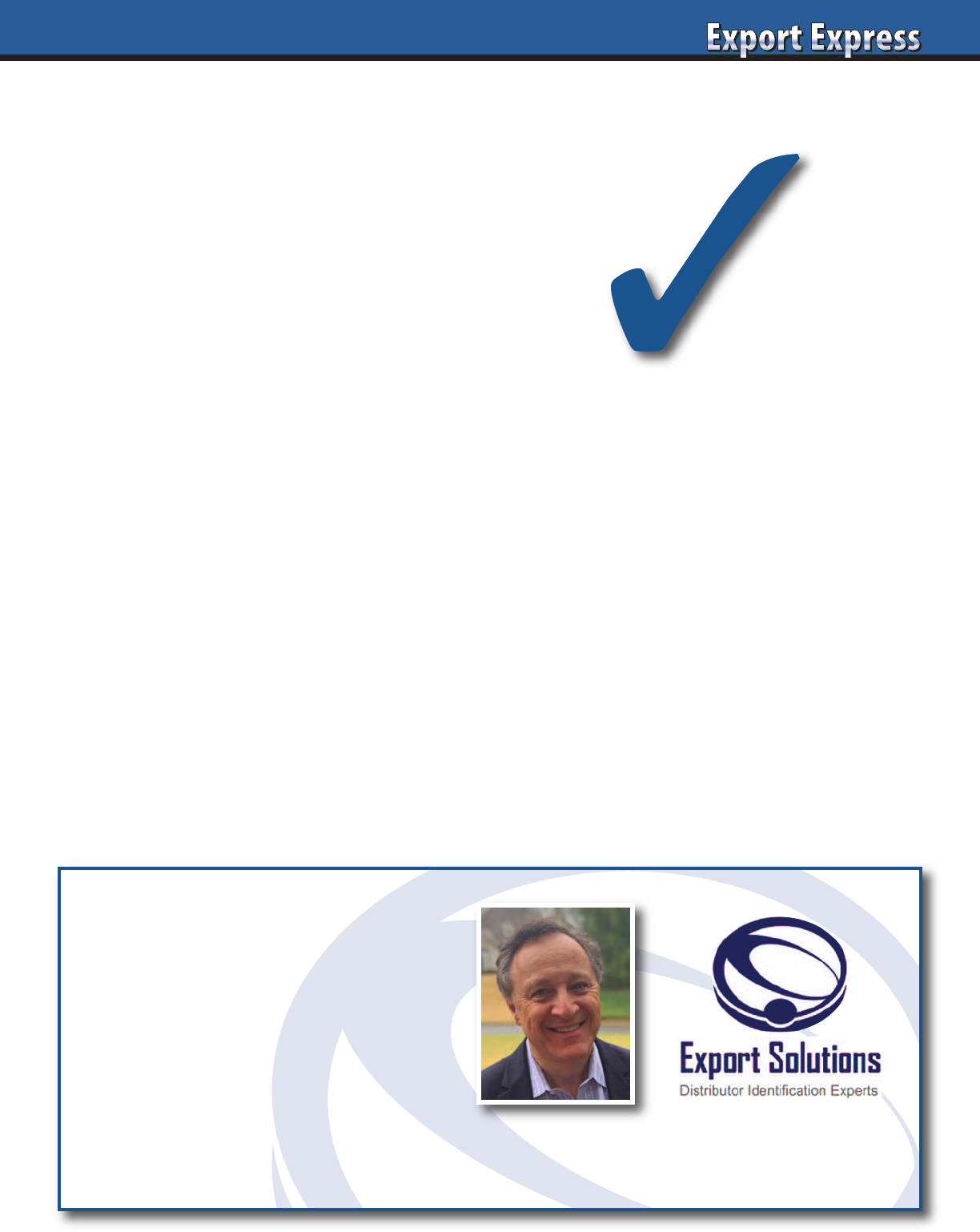
7
Export Solutions’ New Distributor Checklist
____ Contract/Agreement
____ Price Calculation Model
____ Business Plan: objectives, marketing,
spending, key dates
____ Category Review: Pricing, Shelf,
Assortment, Merchandising
____ Label Compliance
____ Shelf Life
____ Order Lead Time
____ Minimum Order
____ Pick up Point
____ Payment Terms
____ Payment Currency
____ Damage Policy
____ Product Registration
____ Forecast: Year 1
____ Pipeline Order & Inventory
____ Brand Facts
____ Product Samples
____ Appointment Letter
____ Brand Specifications in System:
Distributor & Customers
____ Training: Key Account Managers,
Retail, Administrative Staff, Warehouse
____ In Store Standards: Pricing, Shelf
Management, Merchandising
____ FAQ’s/Handling Common Objections
____ Key Account Presentation
____ Customer Appointment Dates
____ Category/Business Review:
Tailored to Each Key Account
____ Retail Sales Contest
____ Checkpoint Calls
____ Market Audit Date
____ Reporting: Track Distribution, Pricing,
Shelf Positioning, Merchandising, etc.
Talk to an Expert
• Find Distributors in 96 Countries
• International Strategy Road Map
• Fix Problem Markets
• Entry Plans
• Export Workshops
• Motivational Meeting Speaker
Contact Greg Seminara at (001)-404-255-8387 to discuss your business development project.
www.exportsolutions.com
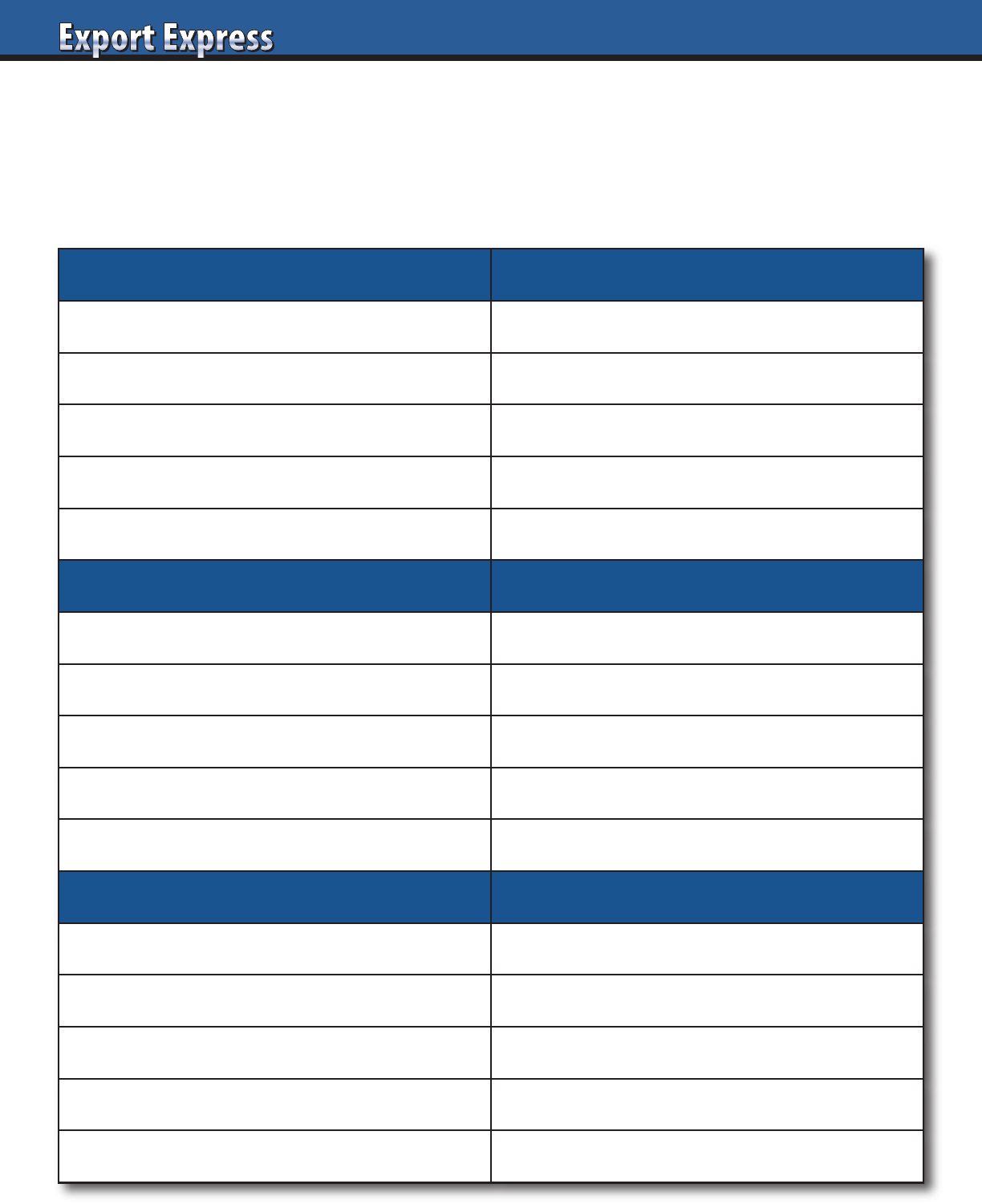
8
“The Right Way” – New Country Launch
Retail buyers and distributors are receptive to brand launches from multinationals. Why?
Multinationals succeed, as they introduce new products “The Right Way.” Export Solutions recaps
30 components of launching “The Right Way.” Exporters create magic with limited budgets!
Winners check as many boxes as possible on “The Right Way” scorecard.
Product Retailer
o
Meaningful innovation – not “me too”
o
Boost category sales, margin, and profit
o
Consumer market research insights
o
Syndicated data (Nielsen) – category facts
o
Technical confirmation of product differentiation
o
Invest in retailer “push” programs
o
Reasonable retail price – premium (not sky high)
o
4-6 high value promotional events per year
o
Test market results – similar country or retailer
o
Retailer VP, distributor CEO at intro call
Marketing Excitement
o
360 marketing plan: TV, in-store, social, PR
o
Launch party – memorable location
o
Sampling
o
PR, social media, trade press
o
Social media
o
Celebrity endorsement
o
Displays: end of aisle and shelf blocks
o
Distributor sales contest
o
Special offers – retailer fliers
o
Donation to local charity
Team Scorecard
o
Distributor – best in class, category expert
o
Year 1: invest; year 2: break even; year 3: profit
o
Local manager – launch oversight
o
Sales volume (retail sell-out)
o
Marketing, social media, PR agencies
o
Market share
o
Brand/technical resource from headquarters
o
Retail availability (weighted distribution)
o
Total distributor engagement: reps. to CEO
o
Year 2 commitment and enthusiasm
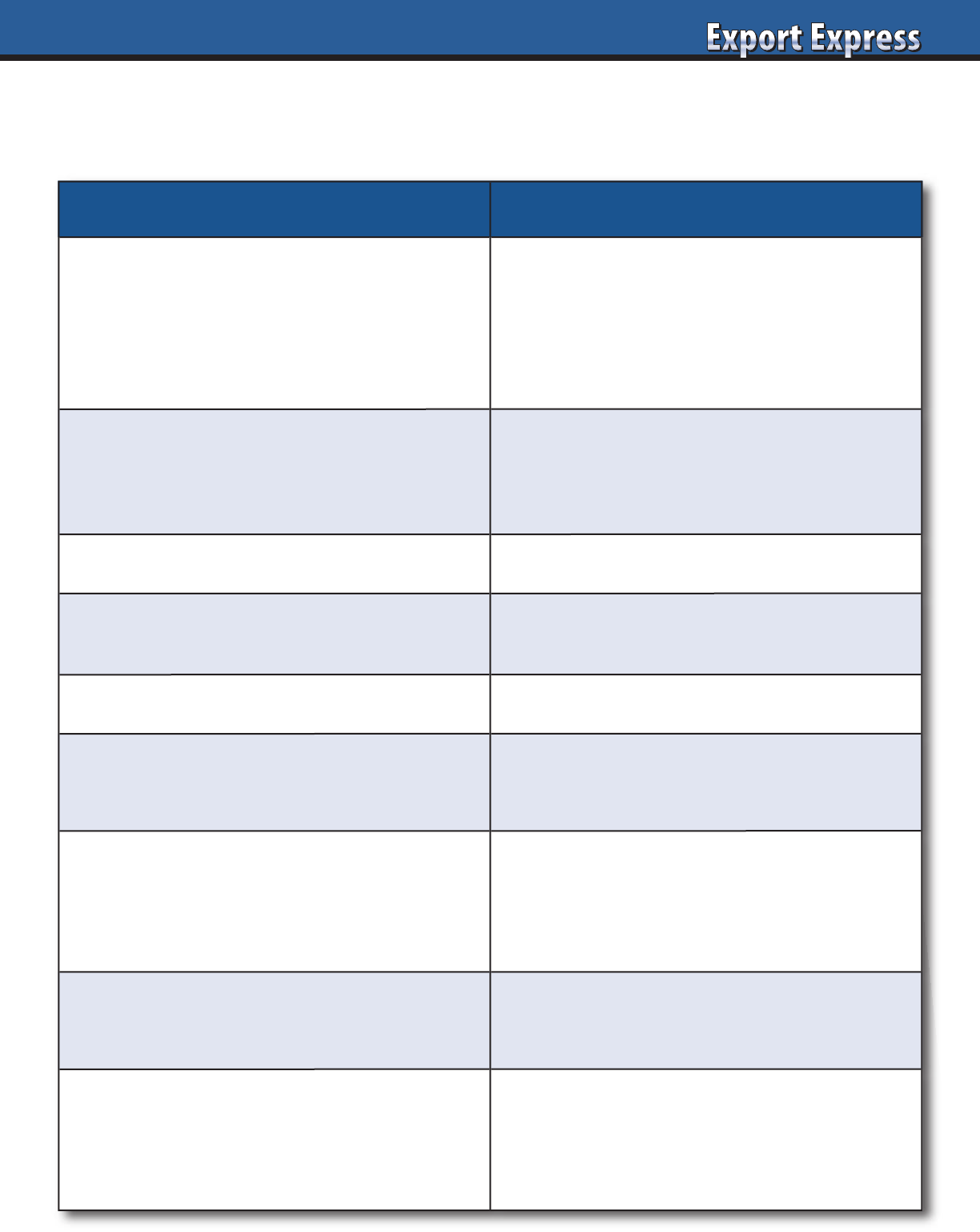
9
Business Case Template – Brand Owner
Request for Information – New Distributor
Activity
Comments
Brand Owner Profile
•
Founding date, headquarter location
• Annual sales
• Category, point of difference,
international sales
Opportunity
•
Anticipated Year 1, Year 3,
Year 5 revenues
• Market share aspirations
Product Portfolio
•
Core items from product portfolio
Retail Price Range
•
Estimated retail price or premium
vs. current category items
Channels/Customers
•
Target trade channels, customers
Marketing Budget
•
Spending range or percent of sales
• Any contingencies
Marketing Activities
•
Consumer promotion, sampling, media
• Trade promotion, listing fees
• Social media, community engagement
Launch Timing
•
Launch date
• Retail availability date
Information Required
•
Category Review, Year 1 Business Plan
• Value Chain, Team Members
• Timeline

10
Summary
CerealCo was founded in 1960 and is based in Atlanta, Georgia (USA). 2022 sales exceeded $300 million, including more than
$100 million in export sales to 25 countries outside the USA. CerealCo is a leader in organic/gluten free cereals.
Oppportunity
CerealCo’s goal is to achieve retail sales of $500,000 in year one, growing to $1 million by year three and $2 million by year five.
Market share objective is 15% of the premium international cereal category. The size of the prize translates to roughly $1.5 million
in distributor sales to retailers and $1.1 million in Cerealco sales to the distributor by year five.
Product Range
CerealCo offers a complete range of more than 30 organic, gluten free and sugar free cereals. For international markets, our six core
items are Organic (Original), Organic with Nuts, Organic Chocolate, Organic with Berries plus Gluten Free, and Sugar Free. All core
items available in a 300 gram size.
Retail Price
Approximate retail pricing is equivalent to $5 US dollars including VAT in local currency. This is consistent with other premium
international cereals and approximately a 20% premium to non-organic cereals. Our price list is attached.
Channels/Customers
Our year one focus is on the supermarket and natural foods channels. Initial targets are supermarkets catering to middle
and upper income consumers in the major cities. Year three aspiration is to expand to all supermarkets and launch into the
foodservice/horeca channel.
Marketing Budget
A provisional year one launch budget of $50,000 has been established. Ongoing marketing and trade support levels are projected
at the rate of 10% of distributor purchase value.
Marketing Activities
Distributor and CerealCo will agree on a joint business plan. Key components will include sampling and introductory price discounts.
A limited budget is established for listing fees at leading chains. However, it is CerealCo’s preference to offer “free goods” in lieu of a
listing fee. Launch plan will include ongoing social media campaign targeted against online communities appreciative of other organic
and gluten free products.
Launch Timing
Initial shipment – February. Sales Launch – March. Retail Availability – May. Marketing starts – June.
Information Required
Distributor should supply the following information within three weeks:
• Answers to key questions
• Cereal category review
• Year one business plan proposal
• Value chain: port to retail shelf
• Distributor proposed point of contact for CerealCo
• Timeline of key activities
*CerealCo is a fictitious company. Any resemblance to an actual cereal company is coincidental.
Sample Business Case Template- Brand Owner “CerealCo*”
Request for Information – New Distributor for CerealCo
Need more information? Visit www.exportsolutions.com.
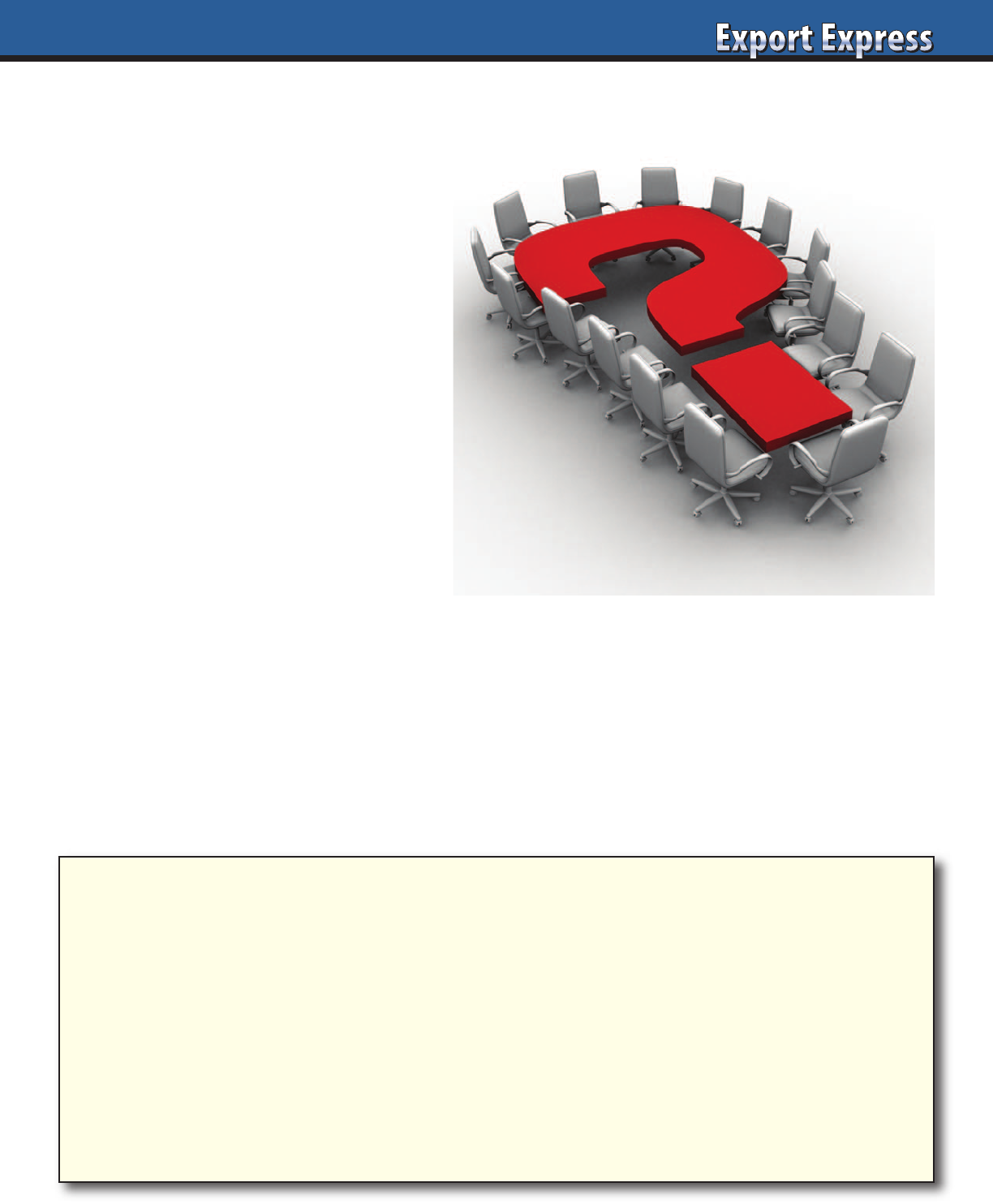
Ten Questions: Developing your Cooperation Model
1. Size of the Prize
What are the distributor’s year one and year three
volume estimates? How big is the category? Is the
category growing?
2. Key Account Listings
What listings can we achieve in year one? Who will
be our biggest customers? Will there be differences
in retailer acceptance by region or channel?
3. Trade Reaction
What will retailers like about our brand? Any potential
barriers? Which retailers will be most challenging?
4. Brand Manager
Who will be our primary point of contact?
Experience level? Workload?
5. Marketing Investment
What budget is requested to achieve our mutual
shipment objectives? Who pays for marketing costs?
Which costs are split?
6. Currency Fluctuation
What assumptions are made in your price calculation?
What happens if the currency fluctuates more than
5 percent in either direction? How do you handle
price increases?
7. Distributor Margin
What is your distributor margin? What services are included?
Any other fees or regular costs if we work together?
8. Trial and Repeat
What strategies are required to generate consumer trial
and repeat purchase? What works? How do you conduct
post-promotion analysis and measure payout and success?
9.Focus
Where will our company rank in terms of volume contribution
to your overall business? How will we secure share of mind
during our critical first year?
10. Issues
What are the biggest issues we will face? Barriers to success?
What must happen to win?
5 Critical Questions to Thrive in 2025
1. Are we willing to pursue international acquisitions?
2. Would your company consider overseas contract packing (versus export)?
3. Can we test a high spend investment plan (“The Right Way”) in a strategic country?
4. Would your company invest aggressively in offshore head count in advance of sales?
5. Europeans: can we develop the USA market implementing the USA playbook?
USA factory, broker network, competitive pricing, USA team, channel strategy,
30-50% of sales on trade promotions?
11
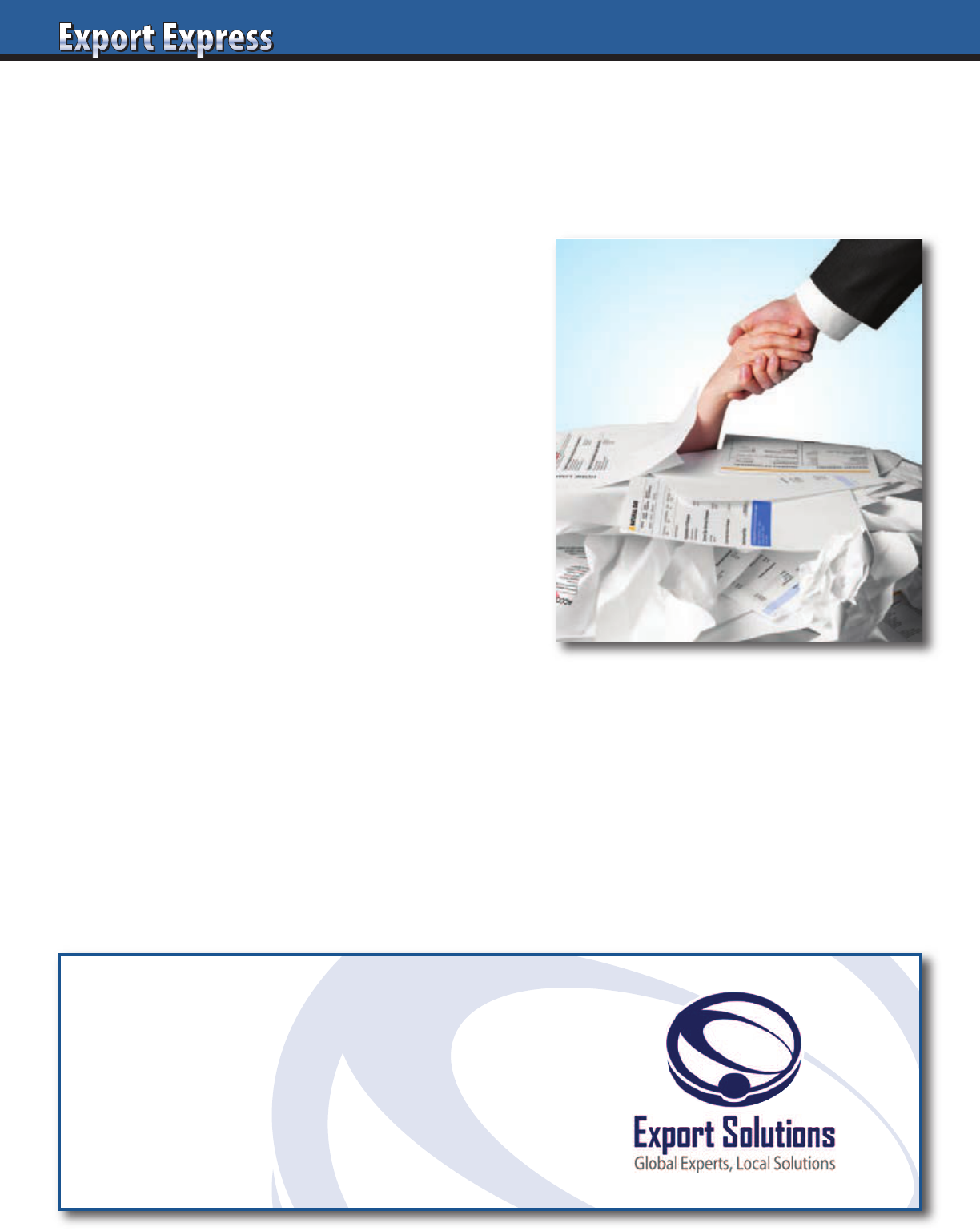
Why do Export Managers Partner with
Export Solutions for Distributor Search Help?
4 Industries Leading Distributor Rolodex
• Excellent relationships across 96 countries
• Database tracks 85 distributors per country
• 300+ distributor search projects completed.
4 10 Step Distributor Search Process
• Logical, thorough due diligence process
• Professional approach yields positive results
• Publisher: Distributor Search Guide
4 Independent Expert Assessment
• Expert partner to export managers
• Focused on all aspects of distributor search
• Working for you!
4 Results
• 90%+ success rate
• Align with “Best in Class” distributors
• Typical project takes 4 months from project brief to distributor selection
4 Make Your Life Easier!
• Identifies 5-8 qualified candidates per country
• Organize meetings with top candidates
• Sounding board during assessment process
• Export Solutions participation sends positive message to distributors.
Export Solutions Can Help!
• Distributor Search helper in 96 countries
Contact Greg Seminara at
gseminara@exportsolutions.com
or (001)-404-255-8387
www.exportsolutions.com
12
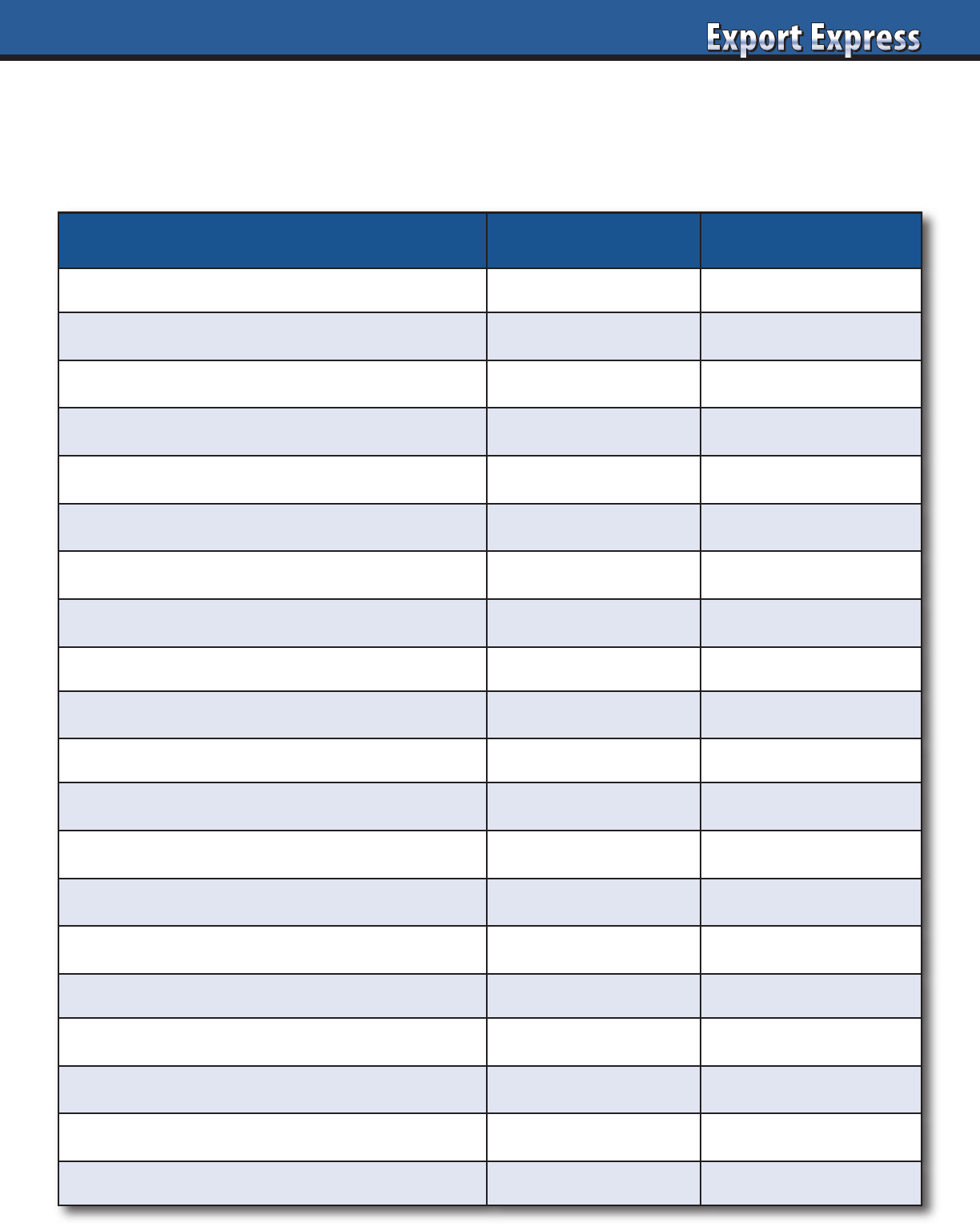
13
What Distributors Want to Know ?
Strong distributors are overwhelmed by calls from brand owners looking for new partners. Distributors assess
each opportunity carefully, as any new brand must add incremental sales and profits and not distract from
priorities from existing brands handled. What is the “size of the prize” for the distributor?
Assessment Criteria Facts Rating (10 = Best)
Your company: size/ reputation
Existing business: sales in distributors country?
If zero “current sales,” what is realistic expectation?
Brand’s USP…your point of difference/innovation?
Size of investment plan: Marketing and Trade?
Potential distributor revenues?margin?
How does the product taste? (or peform)
How attractive/compliant is the packaging?
Pricing relative to category?
Brand success story in an adjacent country?
Competition intensity in category?
Brand range complexity?Product shelf life?
Local market research? Syndicated data?
Will brand invest in marketing and social media?
Will this be a tough product to launch?
Can we grow with the brand owner?
Your brand: core distributor category or adjacency?
Will the export manager be good to work with?
Will we be proud/excited to represent this brand?
What is the “size of the prize?”

14
Consumer pricing is one of the famous
“Four P’s” of product marketing. Many
export managers spend countless hours
negotiating wholesale price lists with
distributors and retailers. However, this
intensity frequently disappears when the
discussion shifts to the point of pricing to
the consumer. This is unfortunate, because
retail pricing is at the critical point where
our marketing dreams and distributor
inventory are translated to tangible sales.
I recently conducted a seminar where I presented a full day program on Export Strategy,
Distributor Economics, and Getting More Than Your Fair Share of Your Distributors
Attention. In the Distributor Economics module, I surveyed the group on how many
maintained copies of each distributor’s price calculation. This is the fundamental formula
that tracks each brands pricing inputs from factory gate to supermarket shelf. None of the
participants had copies of their distributor’s actual price calculation or requested a market
wide retail price survey. As the norm, busy export managers focus attention on the myriads
of details required to process orders such as importation paperwork and product
registration. However, retail pricing is a critical element to add to your “to-do” list.
Listed below are Export Solutions’ Tips for managing your retail price guidelines.
1. Review Suggested Retail Price by Market.
Is your pricing realistic based upon 2022 market dynamics and your cost calculation?
2. Conduct Market Wide Retail Price Survey
How do your prices compare versus your suggested retail price and competitive set?
3. Obtain Distributor Price Calculations
Most distributors openly share this information with their brand partners. If a distributor
is hesitant, it’s usually easy to figure out if you have retail prices.
Retail price - distributor cost - sales taxes and import duties = gross margin.
This gross margin is divided by the retailer and distributor.
4. Examine Each Line Item of a Price Calculation
Distributors and Retailers are entitled to a fair return for their work on your brand. They
maintain profit targets just like your company. In some cases, price calculation transparency
leads to breakthrough changes in business development. I remember a situation where the
distributor established an 8% currency benefit at the start of a price calculation to hedge
against fluctuation. The export manager agreed to sell in the common currency, absorbing
the risk, but translating to an 8% positive benefit to the brand price. In some cases,
distributors may place “average” numbers in a calculation for logistics services or trade
discounts which may not be representative for your brand.
5. Evaluate Relationship Between Everyday Pricing and Promotional Pricing
Price analysis should reveal typical price paid by the consumer. For example “everyday”
prices are not as relevant if the consumer habit is to wait until product is on promotional
discount to purchase and “stock up.”
6. Supermarket E-Commerce Sites Offer Instant Desktop Price Surveys
Lately, I have checked online web sites for retailers in the UK, Australia, Panama and the
USA to get an immediate snapshot of market prices and assortment. It’s not perfect, but
a free and easy way to begin to understand market pricing dynamics.
Pricing is a cornerstone of your brand proposition. A little emphasis and investigation will
determine if your “Price is Right” to optimize sales in a country.
www.exportsolutions.com
“Spend Time Selling to Distributors versus Searching for Distributors”
Price is Right?
Greg Seminara
404-255-8387
Strategic Services
Contact Us for
Export Solutions
1. Identify Best in Class
Distributors: 96 Countries
2. Best Practices
Export Strategy
3. Distributor Management
Workshops
4. Export 101:
Let’s Get Started
5. New Market
Prioritization
and Launch Plan
6. Personal Distributor
Introductions:
96 Countries
7. Walmart International
8. Distributor Contracts,
Margins, and Fees
9. Meeting Speaker
10. International
Strategy Expert
Strategic Services
Contact Us for
Export Solutions
1. Identify Best in Class
Distributors: 96 Countries
2. Best Practices
Export Strategy
3. Distributor Management
Workshops
4. Export 101:
Let’s Get Started
5. New Market
Prioritization
and Launch Plan
6. Personal Distributor
Introductions:
96 Countries
7. Walmart International
8. Distributor Contracts,
Margins, and Fees
9. Meeting Speaker
10. International
Strategy Expert
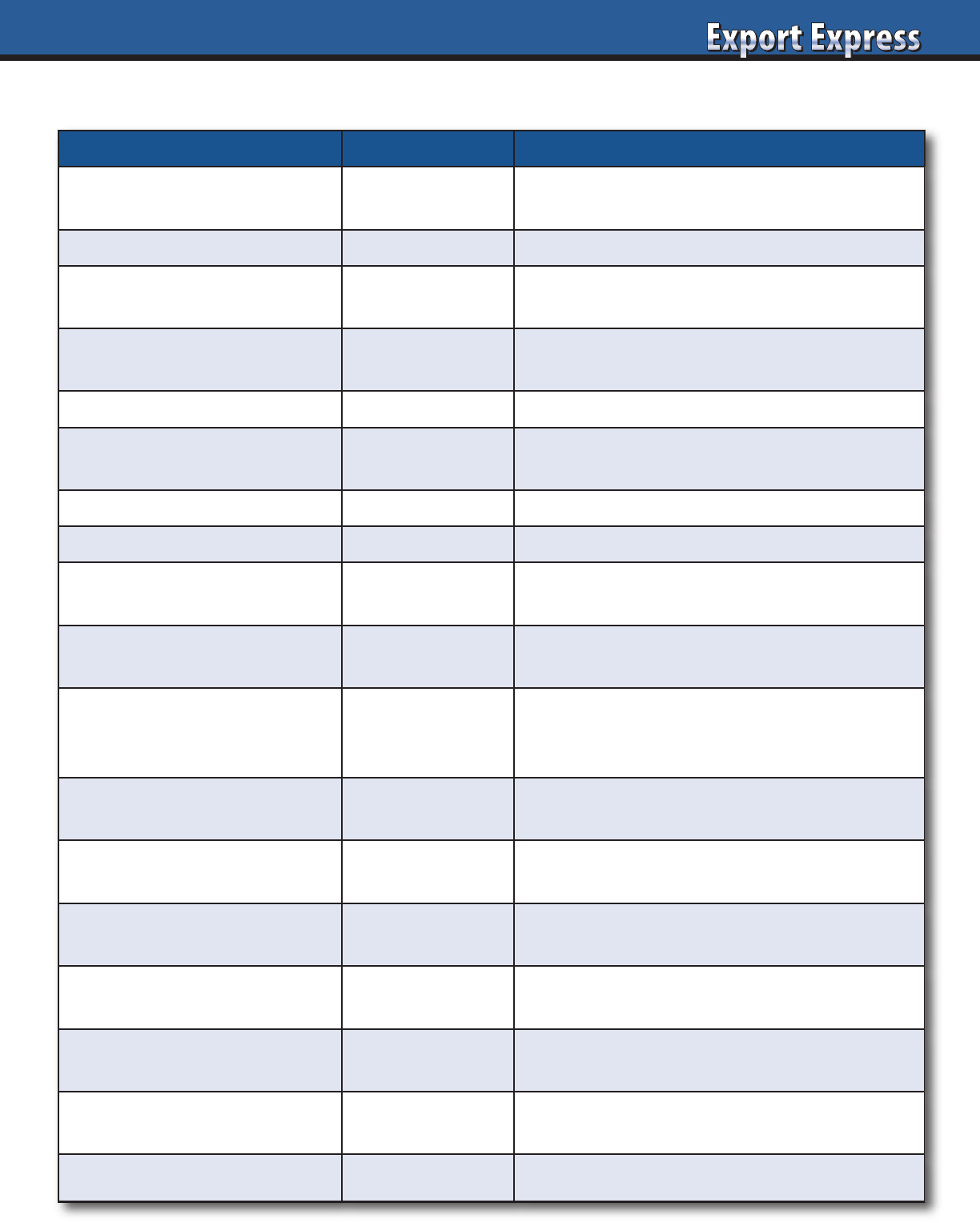
15
Price Calculation Worksheet
Item Amount Comments
List Price (factory or port)
Compare to your domestic list price?
Avoid diverting risk.
Exchange rate Watch bank rate vs. distributor rate.
Freight (sea, truck or rail)
Target full containers.
Consolidation is costly.
Duties
Apply correct Harmonized (HS) code.
Confirm Free Trade Agreements.
Customs clearance, insurance Money and time!
Inland freight: port to distributor
Translate actual costs to case rate.
Avoid flat percentage rates.
Landed Cost
Product Stickering Select countries.
Listing Fees
Flat fee. One time only.
Usually not in calculation.
Marketing fund accrual
Typically, 10-20% of list price.
Part of calculation or manufacturers price.
Distributor Margin
Normal range: 15-35%.
Depends on size, complexity of brand, services,
and “what trade spend is included.”
Other Distributor Fees
Should be part of distributor margin.
Avoid hidden profit centers.
Price to Retailer
Fair and transparent model.
Incentives for large customers, extra performance.
Retailer promotions, incentives,
rebates
10 – 20% depending on the country.
Other Retailer Fees
At times for merchandising or central distribution.
Should be allocated from distributor margin.
Retailer Margin
Global average: 28%
Range: 15% -45% based upon category, brand.
Sales Tax/VAT
Included in price in many countries.
USA sales tax is on top of shelf price.
Consumer shelf price Everyday prices and promotional prices.
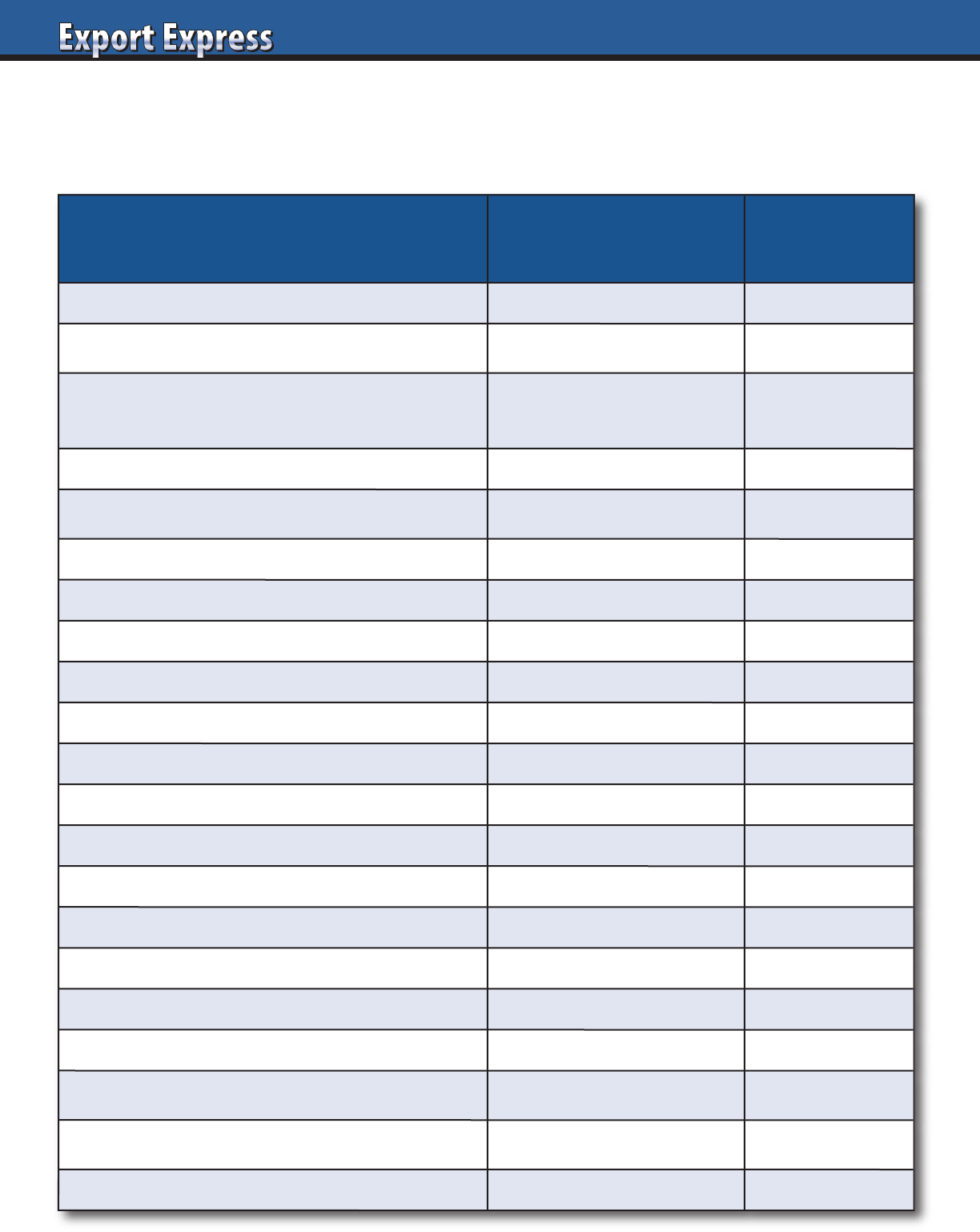
16
Cost Calculation Assessment*
*Ambient grocery example: Higher margins – Chilled and Health & Beauty products
Assessment Criteria
Global
Benchmark
Actual
Retailer: Everyday margin
20-35%
Retailer: Back margin (rebates,discounts)
0-10%
Retailer: Other margin
(Damage, merchandising, central warehouse)
0-5%
Total Retailer Gross Margin
25-40%
Trade Promotion (Manufacturer)
5-20% of net sales
Total Distributor Margin
15-35%
Warehouse/Stickering
2-4%
Delivery
2-5%
Total Distributor Logistics
3-7%
Key Account Sales
1-3%
Brand Management
1-2%
Merchandisers/Field Force
0-4%
Total Distributor Sales Team
4-6%
Administration
1-2%
Finance and Collections
2-5%
Overheads (office, IT, corporate)
2-5%
Distributor Promotion Investment
0-10%
Distributor Net Profit
2-5%

Do you speak the same language as
your distributors? I am not talking
about English, Italian, Arabic, or
Chinese linguistic skills. I am speaking
the language of money. Most export
managers discuss business with their
distributors in terms of cases and
containers. Many distributors are
entrepreneurs that measure their business in terms of profit contribution and
cash flow, just like your company CFO. Understanding distributor economics
can position you and your company as preferred suppliers.
1. Distributors deserve a reasonable profit for their efforts.
Many achieve a net profit margin of only 3-5 percent plus various owner benefits.
A financially stable partner invests in people and technology to advance your mutual
business. A solid balance sheet allows the distributor to weather the storm in a political
or financial crisis.
2. What is the “salary” you pay your distributors?
Calculate cash flow generated by your company by analyzing distributor net sales
to customers multiplied by the distributor margin excluding any promotional bill
backs. Margin is one metric, but cash generated pays the bills. How does the distributor
salary compare to the work required to service your business or the cost of maintaining
a local subsidiary?
3. New Business = Bonus
Distributors are constantly searching for new brands. The next piece of new business
entering a distributor generates incremental sales while better utilizing fixed assets like
the sales team and warehouse. Brands with existing sales in a country are very attractive
as they contribute immediately to the distributor, even if they require a lot of effort
during the initial transition.
4. Pioneering is tough!
Would you work for a company for one year without salary? That is the scenario when
a distributor is challenged to pioneer a brand in a country for the first time. The cycle
of distributor selection, business plan, new product launch, marketing activation and
customer repayment may take one year or more before the distributor receives his first
“paycheck” for his efforts for your company. Of course, there is a long term pay out
for the distributor when the brand works. This is one of the primary reasons that
distributors are reluctant to start to represent a new company without a strong USP
and investment program.
5. What is the “size of the prize?”
Distributors appreciate export managers that frame their partnership in terms of mutual
profit development. Brand owners that understand the intricacies of distributor cost to
serve will be rewarded. Measure your profit contribution to a distributor and request
that a fair share of their resources be invested in your brand development. A profitable
distributor is a healthy distributor!
Good luck!
www.exportsolutions.com
Greg Seminara
“Spend Time Selling to Distributors versus Searching for Distributors”
Distributor Economics
17
Strategic Services
Contact Us for
Export Solutions
1. Identify Best in Class
Distributors: 96 Countries
2. Best Practices
Export Strategy
3. Distributor Management
Workshops
4. Export 101:
Let’s Get Started
5. New Market
Prioritization
and Launch Plan
6. Personal Distributor
Introductions:
96 Countries
7. Walmart International
8. Distributor Contracts,
Margins, and Fees
9. Meeting Speaker
10. International
Strategy Expert
Strategic Services
Contact Us for
Export Solutions
1. Identify Best in Class
Distributors: 96 Countries
2. Best Practices
Export Strategy
3. Distributor Management
Workshops
4. Export 101:
Let’s Get Started
5. New Market
Prioritization
and Launch Plan
6. Personal Distributor
Introductions:
96 Countries
7. Walmart International
8. Distributor Contracts,
Margins, and Fees
9. Meeting Speaker
10. International
Strategy Expert
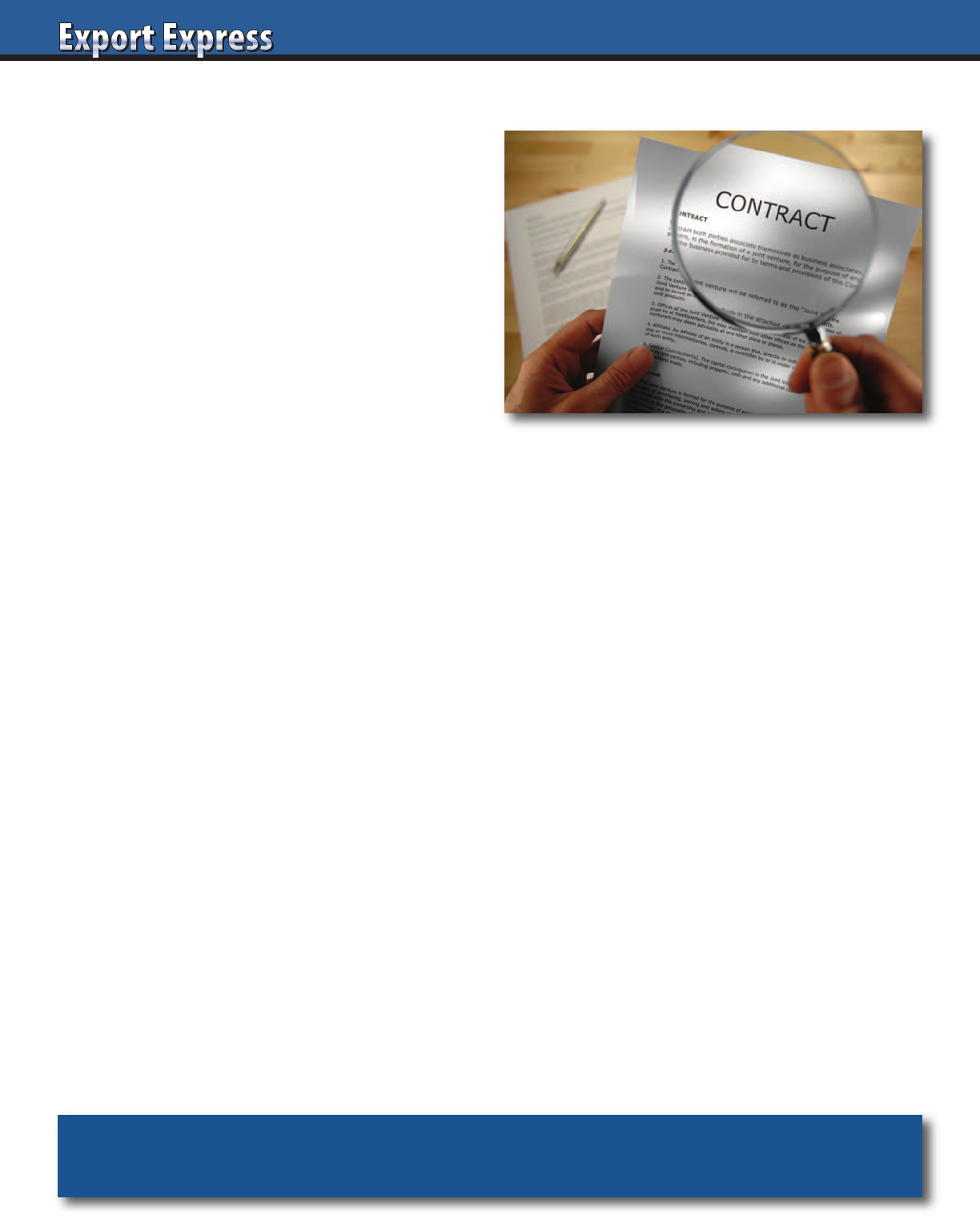
18
When was the last time you reviewed your distributor contracts?
Fortunately, both brand owners and distributors only dedicate
time to these documents at the start of a relationship or when the
end is near. View our ten tips on handling distributor contracts.
1. Contract, Letter, or Handshake deal?
Most companies maintain a mix of these type of relationships.
This is normal, although most wish to standardize the model.
The rule of thumb is that the “more money you spend, the more
detailed the contract you need.” A simple two page letter of
understanding may be appropriate for a small business or a
handshake commitment in situations where the distributor
“buys and resells.” However, fully supported brand launches
and business management of a global brand usually requires
a detailed contract to protect both parties.
2. Sole Versus Exclusive Distributor
Most distributors demand country exclusivity. This is standard,
but may cause problems if the region is subject to inbound
shipments from global customers, e-commerce, or grey market
traders. A compromise is to offer a contract as the “sole”
distributor, providing protection from the manufacturer
appointing multiple partners in a country.
3. Distributors are Customers
At contract time, some manufacturers fail to remember that
distributors are customers, buying your product and reselling
to all local retailers. Suppliers may forward “one way” contracts
that are biased to terms favoring the manufacturer. Would you
send a contract like that to Kroger, Carrefour, or Tesco? Key is
to strike a reasonable balance favoring commercial sensibilities.
4. E-Commerce Implications
Many distributor contracts were executed before the advent
of e-commerce. Revised agreements may be necessary
incorporating e-commerce service requirements: items,
pricing, inventory, metrics, channel exclusivity.
5. Local Law Dominates
Overseas companies should have their contract reviewed by
a local law firm to guarantee compliance with local regulations.
For example, in Puerto Rico and Belgium, distributor (agent)
protection laws supercede any contract language.
6. Point of Arbitration
Normally, the brand owner automatically assigns his home
country as a point of arbitration for any disputes. In some cases,
both parties select a neutral country like Switzerland. A global
corporate counsel once taught me that ultimately any dispute
will need to be resolved in the distributor’s home country. For
example, a USA company can sue a distributor in a USA court.
It is unlikely that the distributor will hire a USA lawyer or even
show up. The USA court may enter a judgement, but the brand
owner still needs to go to the distributor’s country for enforcement.
7. Notification of Contract Termination
Standard contracts appear for two or three years with provisions
for automatic renewal. Distributors fight for long lead times;
a loss of brand can represent a major disruption. From a brand
owner’s side, would you want a terminated employee working
for you for six months or one year? I prefer three months
notification, but that can also backfire if the distributor resigns
your business.
8. Loss of Major Principal
Sadly, I have witnessed distributor bankruptcies because they
were doing “too well.” A distributor grows the brand to a size
where the manufacturer decides to take the brand back and form
a subsidiary. The distributor scrambles, but sometimes they need
to lay off more people and causes a rapid exit of other brands.
2022 contracts should require distributors to inform you within
10 days of notification (not effective date) of any loss of principal
representing ten percent or more of their business.
9. Global/Regional Customers
Large players like Walmart, Costco, Amazon, and Carrefour can
be difficult to manage. They demand best pricing system wide or
threaten to trans ship from other locations. In some cases, these
retailers may demand to “buy direct.” In this case, you can add
an “indent” clause permitting this practice while compensating
the distributor for local services such as merchandising.
10. Late Payments & Currency Exchange Rate
A distributor that pays late signals financial difficulties. Include
a clause that allows you the option to consider the contract in
default with payment delays beyond 45 days or with frequent
problem payers. The benchmark for calculating currency
exchange rates should be specified in the contract. I have seen
cases where a distributor assigns a five to ten percent benefit
in his favor to protect against the possibility of currency swings.
10 Tips: Distributor Contracts 2022
Need more information? Visit www.exportsolutions.com.
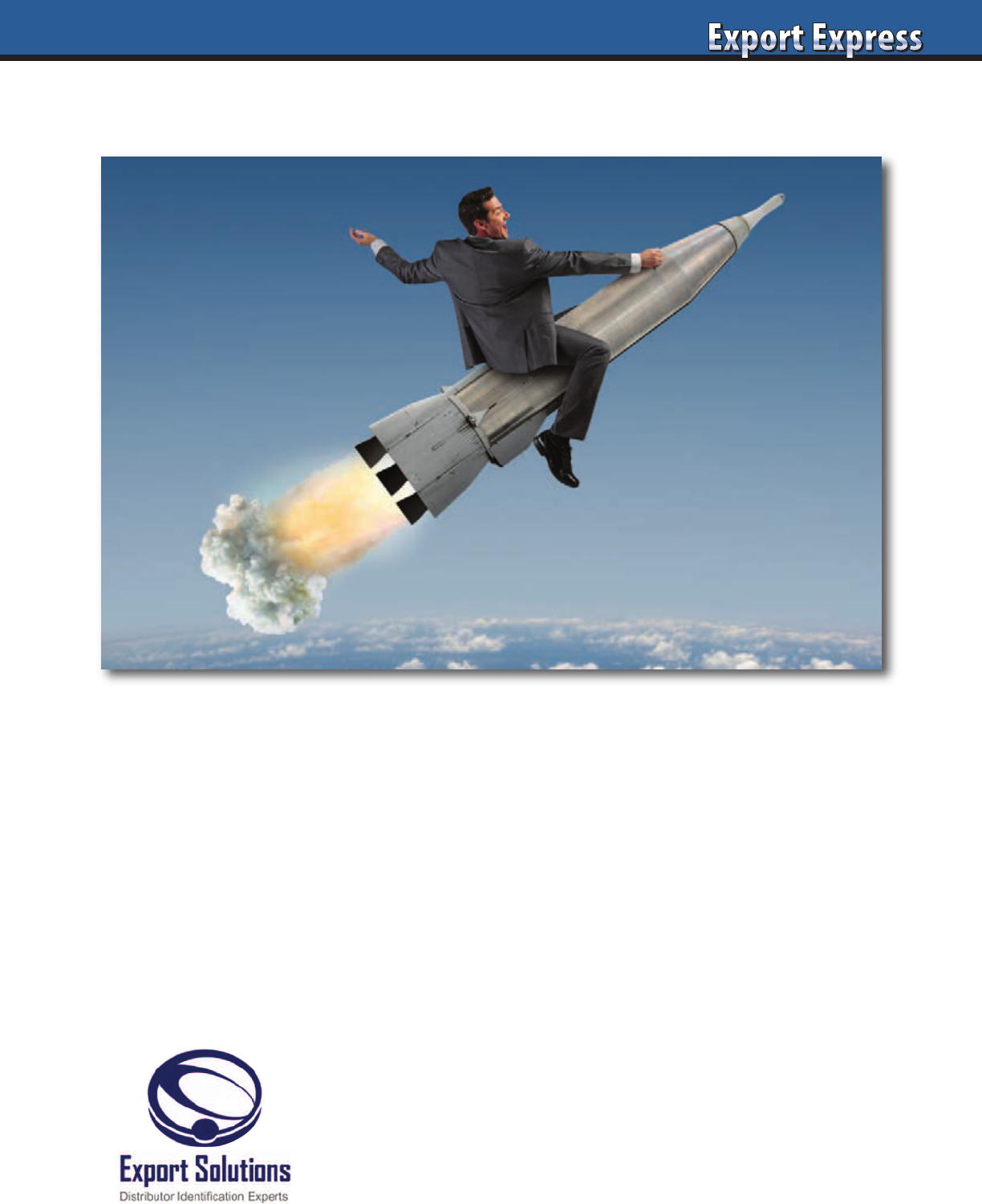
Export Accelerator
Contact Us for Distributor Search Help in 96 Countries
Greg Seminara • greg@exportsolutions.com
“Spend time Selling to Distributors versus
Searching for Distributors”
19
Why have Barilla, Pringles, Nature Valley, Starbucks, Duracell,
Nestlé, Tabasco, Pepperidge Farm, and other leaders used
Export Solutions as a distributor search consultant?
• Powerful distributor network: owner of industry database
9,200 distributors – 96 countries
• Professional 10 step due diligence process
• Results! We make Export Managers’ lives easier!

20
Picking the right distributor is not an exact
science. I know that each of us experiences
moments of frustration when we question,
“why did we ever pick that distributor?”
Believe me, an equal number of examples
exist where a distributor may share the same
emotion about your company! Frequently,
a partnership is christened by a positive
distributor interview or enthusiastic meeting
at a trade show. Everyone is always in a
hurry to negotiate prices and a contract and
secure the first order. However, in many cases the decision to work together is cemented
without a formal business plan where expectations, road map, and KPI’s are established.
Unfortunately, one year later both parties may find themselves pointing fingers at each
other due to disappointing results.
I recently completed a distributor search project in the Middle East. We interviewed a
number of good candidates and identified two with high potential. Last month, I was
notified by the export manager that he selected one of the candidates. I supported his
decision, but questioned how the plan proposals for the two distributors compared?
The vague response confirmed no plans, just that he liked one distributor better.
This year, another project brought me to a country where a new distributor had been
appointed less than one year earlier. Initial results were severely below expectations.
The first question I asked the brand owner related to the reconciliation versus the
original one-year business plan. What happened? In this case, there was general
understanding about the direction of the partnership, but never alignment around
a one-page scorecard with KPIs and a logical road map.
Launching a new distributor relationship is like the birth of a child. A mother rarely
leaves the side of a baby, providing comfort, safety, and nutrition until the infant is
healthy and able to survive without constant oversight. The same philosophy must
apply to a distributor partnership. During the first few months, there must be frequent
communication, care and visibility from the supplier with the new “brand parents.”
This approach results in a healthy brand. Too many times, I see a new distributor
appointed without anyone from the manufacturer committed to visit the country
for the sales launch meeting or conduct a retail sales audit within the first sixty days.
Parents bring their newborn to the doctor frequently for checkups.
Listed below are Export Solutions’ tips on creating a clear annual plan for each country
and distributor partner.
1. Select new distributors based upon the quality of their year one plan:
targeted listings, volume forecast, and retail penetration.
What is their written commitment and timeline for achievement?
2. Current distributors should also have a confirmed one page plan.
Merchandising events, new listing targets, spending, and shipment targets.
Many brand owners treat distributors as good customers which is a smart approach.
The distributor is paying your invoice, not a retailer. Successful distributor partnerships
thrive when both parties are aligned and committed to a simple, one-page plan.
Looking for a sample format? I’ve prepared a one-page business plan template that
is freely available in the Export Tips section of my web site or simply email me.
What is your annual plan for each country?
www.exportsolutions.com
Greg Seminara
404-255-8387
“Spend Time Selling to Distributors versus Searching for Distributors”
What is the Plan?
Strategic Services
Contact Us for
Export Solutions
1. Identify Best in Class
Distributors: 96 Countries
2. Best Practices
Export Strategy
3. Distributor Management
Workshops
4. Export 101:
Let’s Get Started
5. New Market
Prioritization
and Launch Plan
6. Personal Distributor
Introductions:
96 Countries
7. Walmart International
8. Distributor Contracts,
Margins, and Fees
9. Meeting Speaker
10. International
Strategy Expert
Strategic Services
Contact Us for
Export Solutions
1. Identify Best in Class
Distributors: 96 Countries
2. Best Practices
Export Strategy
3. Distributor Management
Workshops
4. Export 101:
Let’s Get Started
5. New Market
Prioritization
and Launch Plan
6. Personal Distributor
Introductions:
96 Countries
7. Walmart International
8. Distributor Contracts,
Margins, and Fees
9. Meeting Speaker
10. International
Strategy Expert
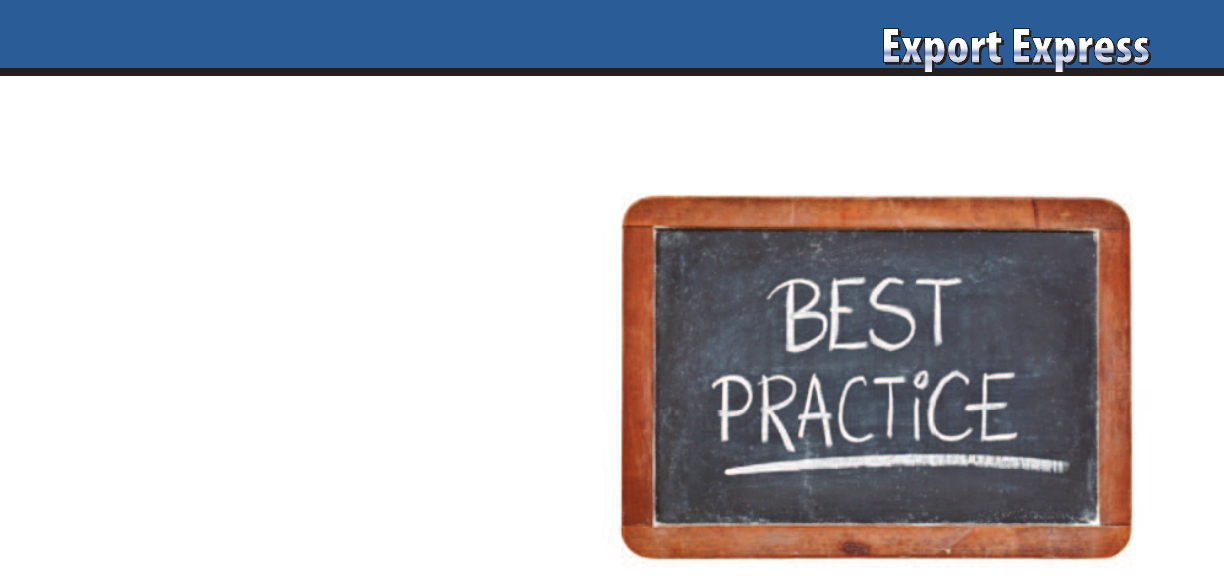
21
Everyone Loves Samples – Ten Tips
Do you enjoy free samples? Everyone is delighted to try a new
product. In most cases, feedback is positive and starts the road
to a purchase and a potential customer for life. Every export
manager is proud of their product quality. However, many
companies underinvest in sampling as an essential marketing
tool. Read Export Solutions’ 10 Tips for expanding your
sampling program.
1. Trial/Snack/Travel Size
Do you offer a small size suitable for sampling? Options range
from a specific trial size to a one-use portion of your product.
Many retailers dedicate valuable cashier checkout space or travel
sections for small sizes.
2. Influencer Product Seeding
Digital influencers are critical when targeting the generation
glued to their phones. Stand out to influencers with a hand-
written note and a sample of your best product. Engage with
the influencers after sample delivery and develop a relationship
versus a one-time campaign.
3. Uber Eats & Grubhub
Online food delivery services are expected to record more
than $28 billion in sales in 2021. Companies should adapt
their Foodservice channel strategies to include sample sizes.
The format can be a portion pack condiment, mini desert treat,
or a trial size of a related product. These can be added to a
meal delivery from a high profile restaurant as a gift to their
customers and to strengthen their overall usage of your brand
“back of house.”
4. Co-Promote
Sampling may be expensive, so it’s always good to co-promote
with adjacent products. Partnerships with other brands from
a shared distributor or through a bulk mailing from your
country’s food trade promotion organization represent efficient
options. “Think about the entire plate, not just your product.”
5. Distributor Samples
Distributors serve as your local brand ambassadors. Include
ten cases of samples with every container order. Encourage
the distributor to supply a case of “car stock” to each sales
representative to share with store managers. Donate samples
to employees’ children’s sports teams to build goodwill.
6. Trial Size Shippers
Retailers love these profitable display pieces as they generate
profitable sales revenue versus a free giveaway. Normally, these
special display units contain about 30-50 units and retail for
$1 to $2 per unit with a profit margin of 50%. Shippers can be
efficient, with no listing fees, representing a simple “in and out”
trial generating promotion.
7. Subscription Boxes
Amazon offers more than 400 monthly subscription boxes.
A typical box contains samples of 5-10 products. USA examples
include Nom Nom and Try Treats for international snacks. Delta
airlines supplied me with a tasty sample box for lunch last week.
8. Embassy Sampling
Many companies’ product portfolios represents regional cuisine,
a new taste overseas but highly appreciated by local expats.
Request that your distributor drop off cases of product samples
at your overseas embassy. Sponsor national holiday events for
the expat community. Your product may even be featured at an
ambassador’s dinner!
9. Event Sponsorship
Everyone looks forward to the return of outdoor concerts and
festivals. These fun events can be impactful places to sample
beverages and indulgent products like biscuits, snacks, candy,
and ice cream.
10. Sample Truck
I love the story of a European protein bar manufacturer who
painted a truck with his brand colors. His team drove all around
town distributing samples. The truck arrived at stores, buyers’
offices, and even major trade shows. No surprise that this
manufacturer gained a loyal, youthful following with this
adventurous approach.
Be generous with your samples! Delight potential buyers
and distributors with your wide range of innovative products.
Always include a memorable gift with your company logo.
Remember that no potential new distributor will sign an
agreement with you until their team has tried your product
and given it the “thumbs up.”

22
E-commerce development is a top 2022 priority for all manufacturers
and distributors. Create a game plan now or risk getting left behind.
3 2021 E-commerce business review for each country
3 Amazon global key account performance review
3 Set stretch objective for 2022 channel growth. + 30%?
3 Create 2022 e-commerce development plan for each country
3 Brand owners leverage corporate e-commerce resources
for export help: training webinar, best practices, etc.
3 Distributors: develop an e-commerce channel team
3 Establish a specific plan for different e-commerce models:
Amazon, Alibaba, supermarket web shops, new models
3 Adapt all aspects of your export strategy to include
e-commerce implications
3 Hire/link with young people under 30 to achieve goals
3 Set goal to become an international e-commerce expert
3 Scorecard results
2022 E-Commerce Game Plan
Need more information? Visit www.exportsolutions.com.
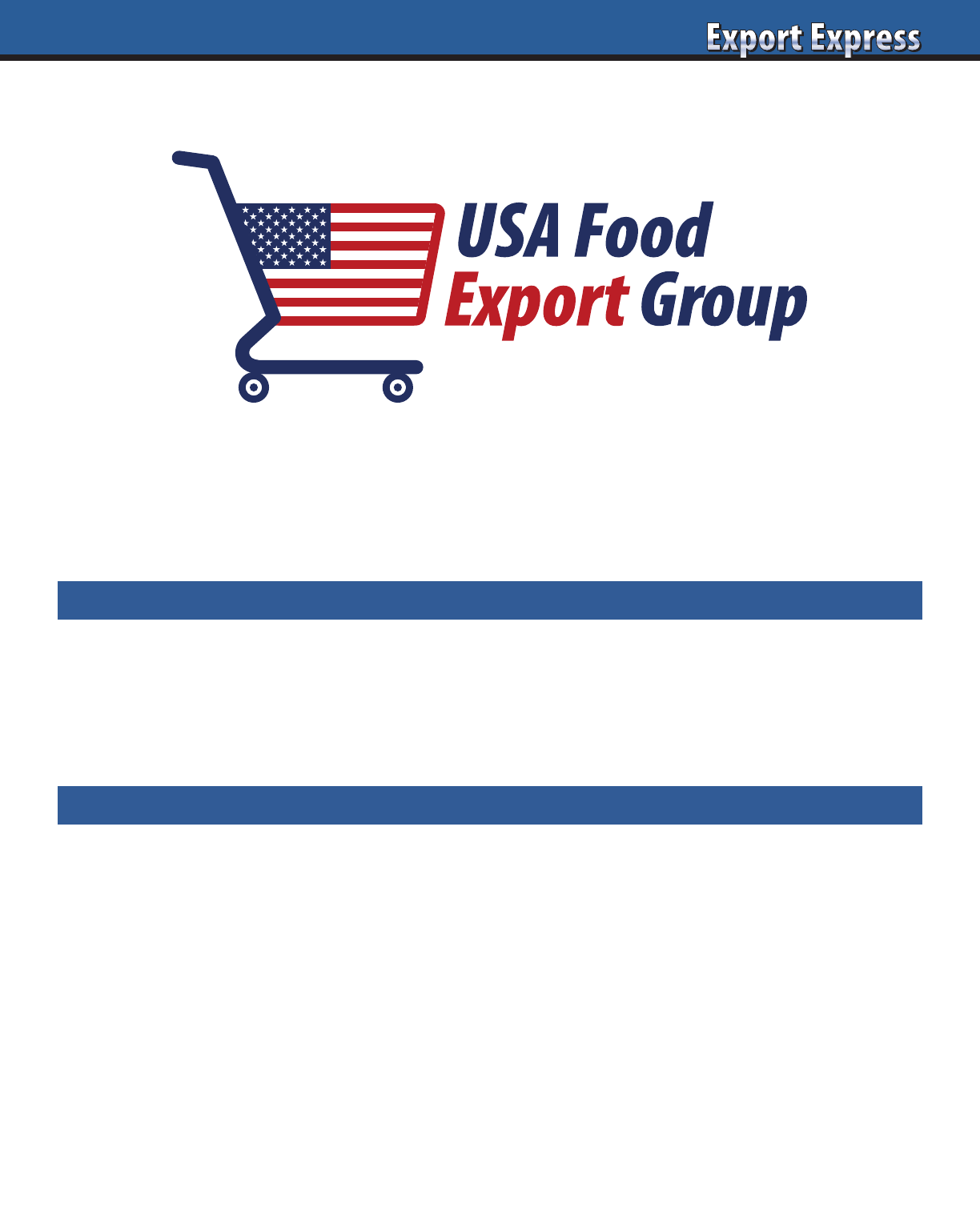
23
Introducing
America’s Favorite Brands
Executive Board
Export Solutions Smucker’s Tabasco
Greg Seminara, CEO Danny Berrios, President Megan Lopez, Vice-President
General Mills Sun-Maid
Eric Saint-Marc Carsten Tietjen
Advisory Board
Bazooka Candy Blue Diamond Bob’s Red Mill
Santiago Ricaurte Dale Tipple Jan Chernus
Bush Beans Campbells Church & Dwight
Dave Bauman Julio Gomez Arun Hiranandani
Ferarra Candy Heartland Idahoan
Daniel Michelena Tom Theobald Ryan Ellis
Johnsonville Sausage Kao USA Keurig Dr. Pepper
Cory Bouck Julie Toole Billy Menendez
Mizkan Reynolds Welch’s
Noel David Chris Corey Marc Rosen
19 Companies | 200+ Top Brands | $80 Billion Combined
View our activities for export managers – www.usafoodexport.com
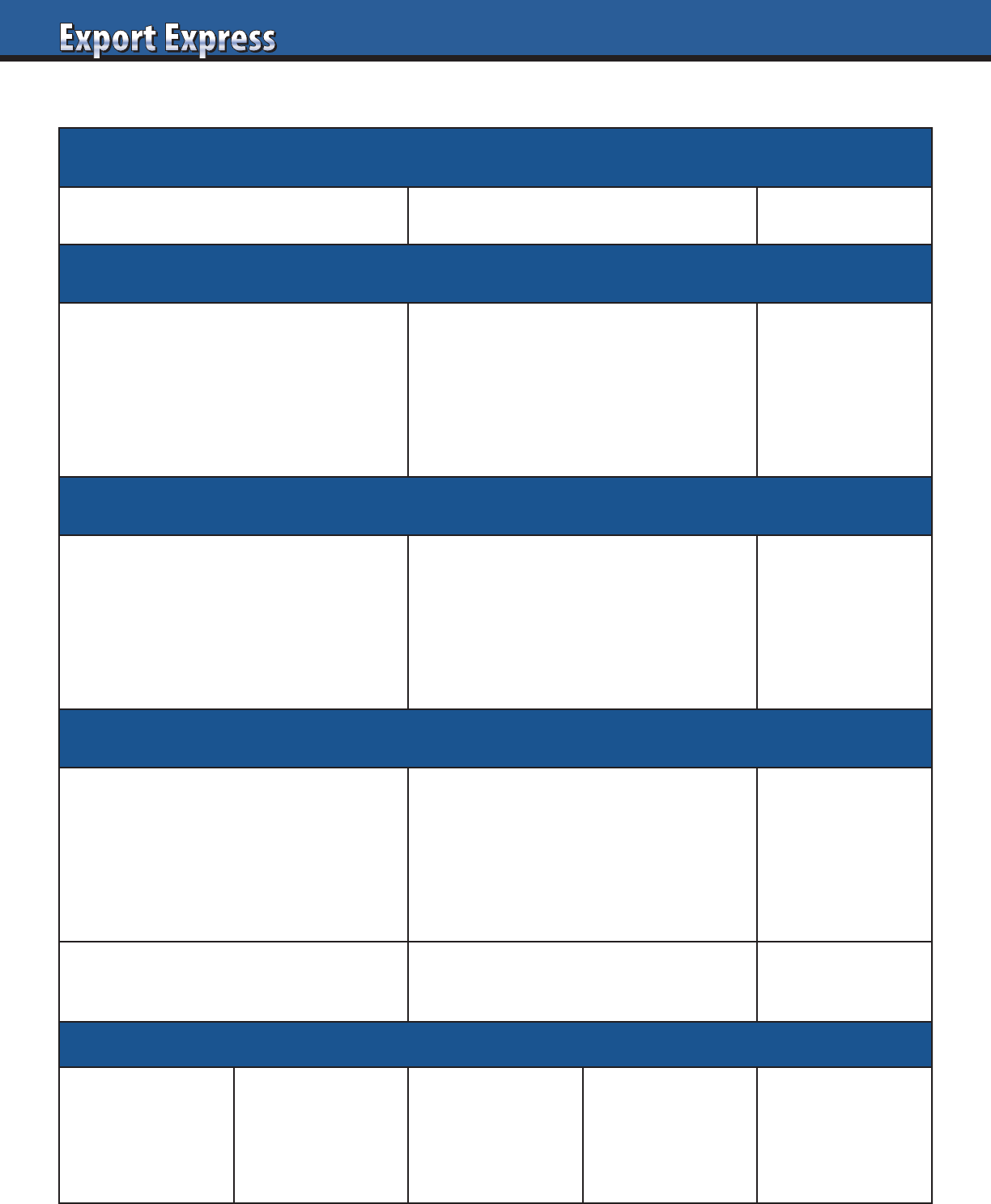
24
Launch Plan Proposal – Year One*
Brand Objective
Volume: _______________ Wtd. Distribution: _______________ Share: ________
Consumer Marketing Activities
Activity
1.
2.
3.
Rationale Cost
Trade Marketing Activities
Activity
1.
2
3.
Volume Cost
Listing Fees
Customer
1.
2.
3.
# SKUs, Space, Promotion Support Cost
Total Year One Volume Total Year One Cost Wtd. Distribution
Distribution Achieved with Above Spend Level
Customer
1.
2.
3.
Stores % Country # SKUs Volume (annual)
*Feel free to attach other pages to support your recommended launch plan.
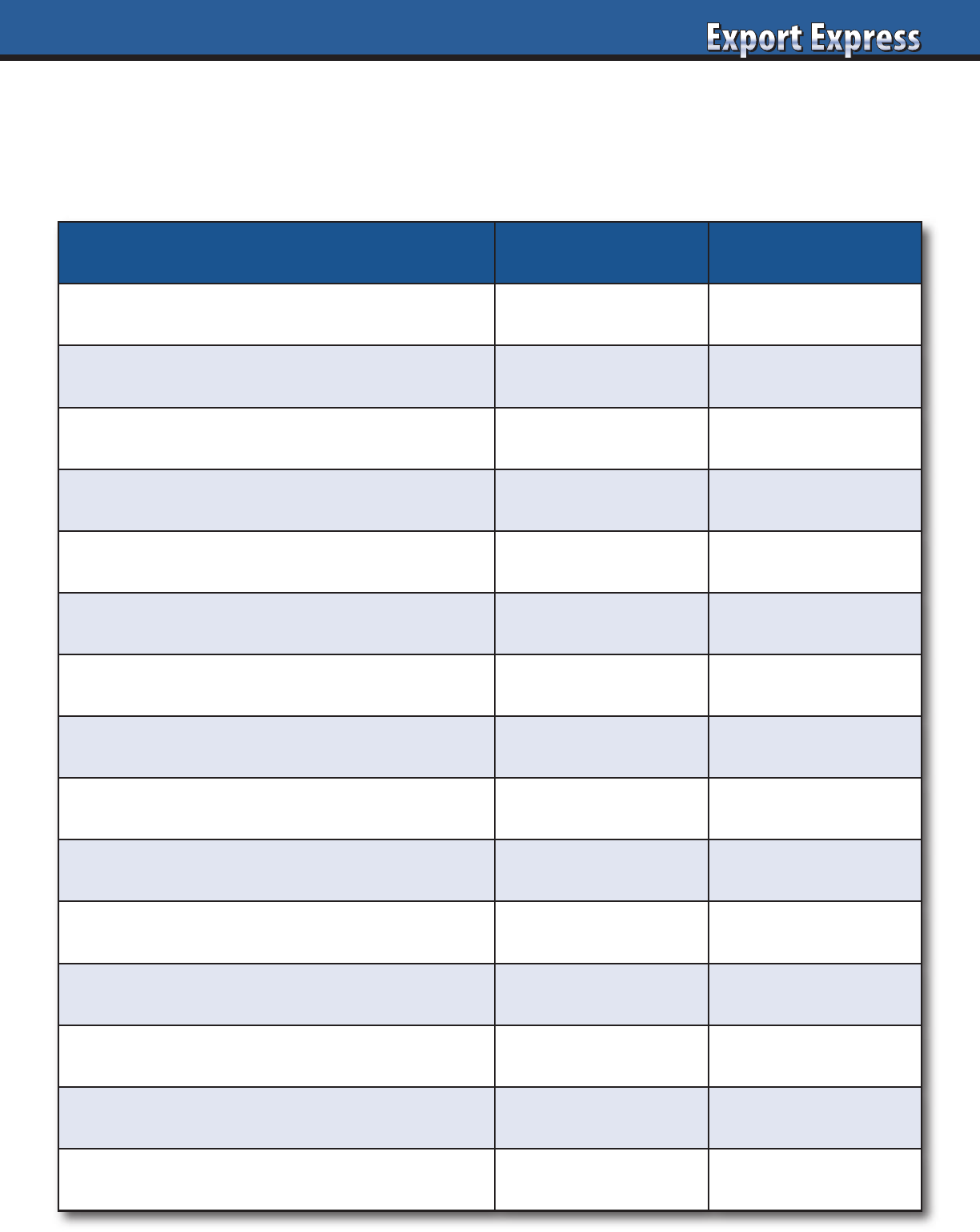
25
Year One Scorecard Example
Brand owners and distributors enter new relationships with great expectations.
Most partnerships succeed, but some under deliver leaving both parties disappointed.
Export Solutions’ Year One scorecard helps both parties align on KPI’s.
Objective Goal Results
Shipments to Distributor
Distributor Sales to Customers
Top 5 Customers
Region: Sales Split by Area
Channel: Sales Split by Channel
Market Share
Listings: Top 5 Customers
Retail Pricing
Shelf Positioning
Shelf Space
Sampling
Social Media
Displays
Manufacturer Investment
Brand Manager Performance
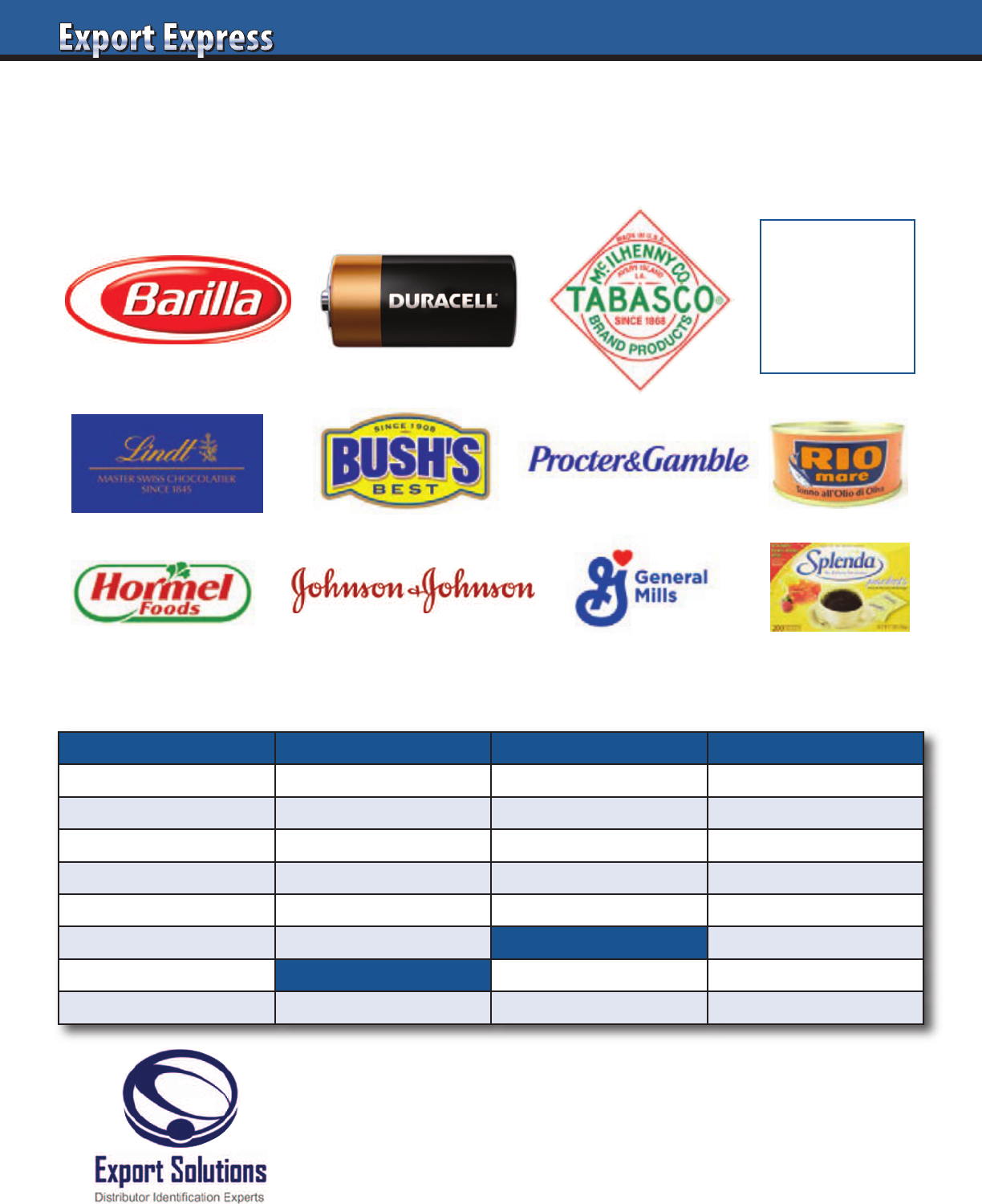
26
Distributor Search Helper for:
Your
Logo
Here
Can We Help You?
Recent Distributor Search Projects
Asia Europe Middle East Latin America
Australia Germany Israel Argentina
China Ireland Kuwait Brazil
Indonesia Netherlands Qatar Colombia
Japan Nordics Saudi Arabia Costa Rica
Malaysia Spain UAE Ecuador
Philippines United Kingdom North America Mexico
Singapore Africa Canada Panama
South Korea South Africa United States Peru
Call the Export Accelerator!
Contact Greg Seminara at greg@exportsolutions.com
to discuss your business development project.
www.exportsolutions.com
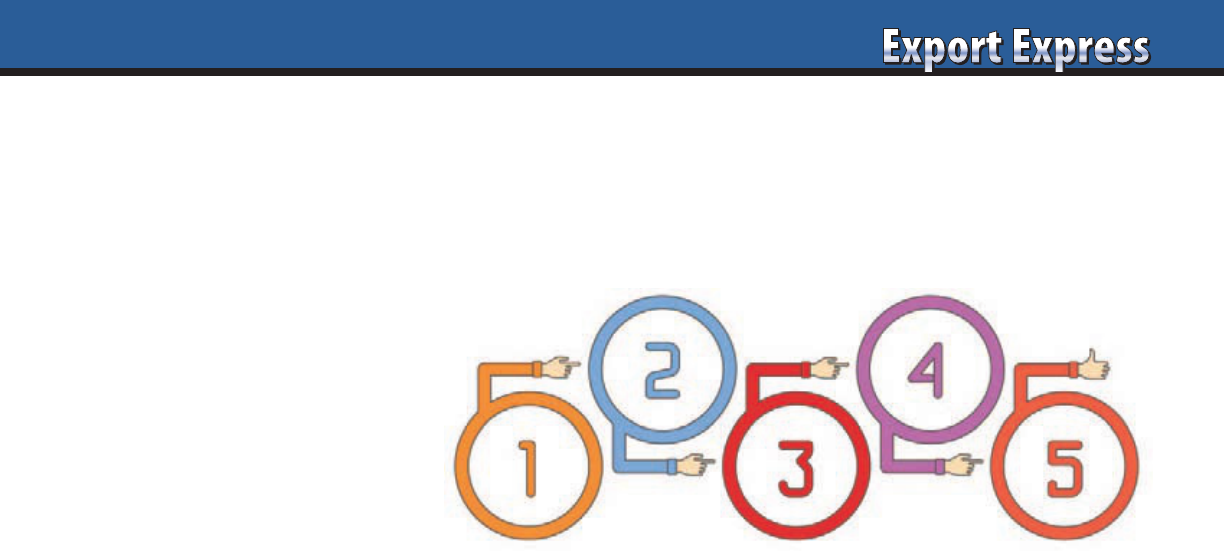
27
Can you resist the temptation to sell to
the biggest retailer in a new country first?
Multinationals armed with barrels of
money and stacks of market research
attack all retailers with a high profile
market entry plan for their new products.
More likely that your company supplies
you with a beloved local brand and a
small checkbook to invest wisely. What
is the logical route forward for exporters
of favorite brands from the USA, UK,
Germany, Brasil, Mexico, Japan, etc?
Listed below is Export Solutions’ 5 step
plan to translate your niche item to mass
market success in overseas countries.
Step 1: Sell to Homesick Consumers
There are six million USA expatriates
abroad and also 6 million UK citizens
found outside Great Britain. On a broader
basis, there are 80 million people of
Italian heritage living outside Italy,
including about 17 million in the USA,
almost equivalent to the USA’s entire
Asian population. 92 million foreigners
claim ties to Great Britain, including
17 million people living in Australia
and 12 million in Canada. These statistics
apply to almost all countries who can find
their citizens dispersed around the world.
These homesick consumers are desperate
for their favorite brands from back home.
Frequently, they will shop online or at
stores dedicated to treats from home such
as Taste of America in Spain or the wide
array of British delights found at Myers of
Keswick in Manhattan. Eataly is a retail
monument saluting the global popularity
of Italian foods. These retailers are logical
first customers for our products.
Step 2: Create Visibility at Restaurants
Featuring Your Cuisine
Many people first discover a new cuisine
from eating out at a restaurant. Adventurous
people like variety in their diets. Tex-Mex
brands enjoy high growth in retailers
throughout Europe, Middle East, and
Asia. Consumers first learned about Tex-
Mex food through visits to Mexican
restaurants. There are several stories
emerging from China such as Starbucks
successfully generating significant coffee
sales from tea drinking Chinese. Other
American products are generating trial in
China through partnering with USA style
restaurants. Teach consumers about your
brand through placement and visibility
at restaurants featuring your country’s
cooking. Consumers will attempt to
recreate the food experience in their
homes with the brands that they enjoyed
at a restaurant.
Step 3: Target Regional Chains
in Expatriate Areas
California is home to 33% of the USA’s
Asian population. New England
maintains the highest concentration
of Brasilians. Chicago is home to many
Greeks. Italians are everywhere, but
primarily reside in the Northeast USA.
Over half of the USA’s Hispanic
population can be found in California,
Texas, and Florida. New York Metro is
home to people from all over the world
from UK to Israel to Russia to France to
the UK. Major cities like London, Hong
Kong, Sao Paolo and Sydney share similar
dynamics. The idea is to sell to regional
supermarket chains with existing demand
generated by people with ties to the home
country. For example, HEB in Texas is an
excellent destination for Hispanic
products. German foods target Giant
Eagle or Meijer in the central USA. Italian
food products enjoy strong visibility at
Shop Rite and Price Chopper. USA
products sell well in overseas locations
where the USA maintained military bases
such as Germany, Philippines, or Japan.
Step 4: Upscale Retailers Feature Variety
Every country features retailers catering
to high income consumers. These stores
feature extensive assortments of
international products as a strategy
to differentiate versus traditional
supermarkets. Their consumers maintain
more disposable income to purchase
premium international brands and are
more open to distinct gastronomic
experiences. Upscale supermarkets range
from Wegman’s in the USA to Waitrose
in the UK, Esselunga in Italy, Jumbo in
South America, Superama in Mexico,
Kem Chicks in Jakarta, and City Super
in China.
Step 5: Proven Track Record
Drives Mass Appeal
Exporters that have successfully
completed steps 1-4 above are now ready
for mass retailers. Success at penetrating
high end, trend setting, retailers will
make your brand more attractive to
supermarkets catering to the general
population. A patient “crawl, walk, run”
approach will also present a strong case
study for your management to validate
the larger investments in marketing and
trade programs required to support a
national brand launch.
Lessons Learned
Calibrate sales expectations to your own
investment in research, marketing, and
trade development funding. It’s perfectly
acceptable to pursue listings at leading
supermarket chains, if you maintain
adequate brand support budgets. If initial
marketing spend is limited, a better
option is to make “lower risk” bets on
homesick consumers or upscale families
which may form a small,but appreciative
consumer base. Success and learning from
early markets provide a logical on ramp
to broader market success.
5 Steps: From Niche Status to Mass Market Success
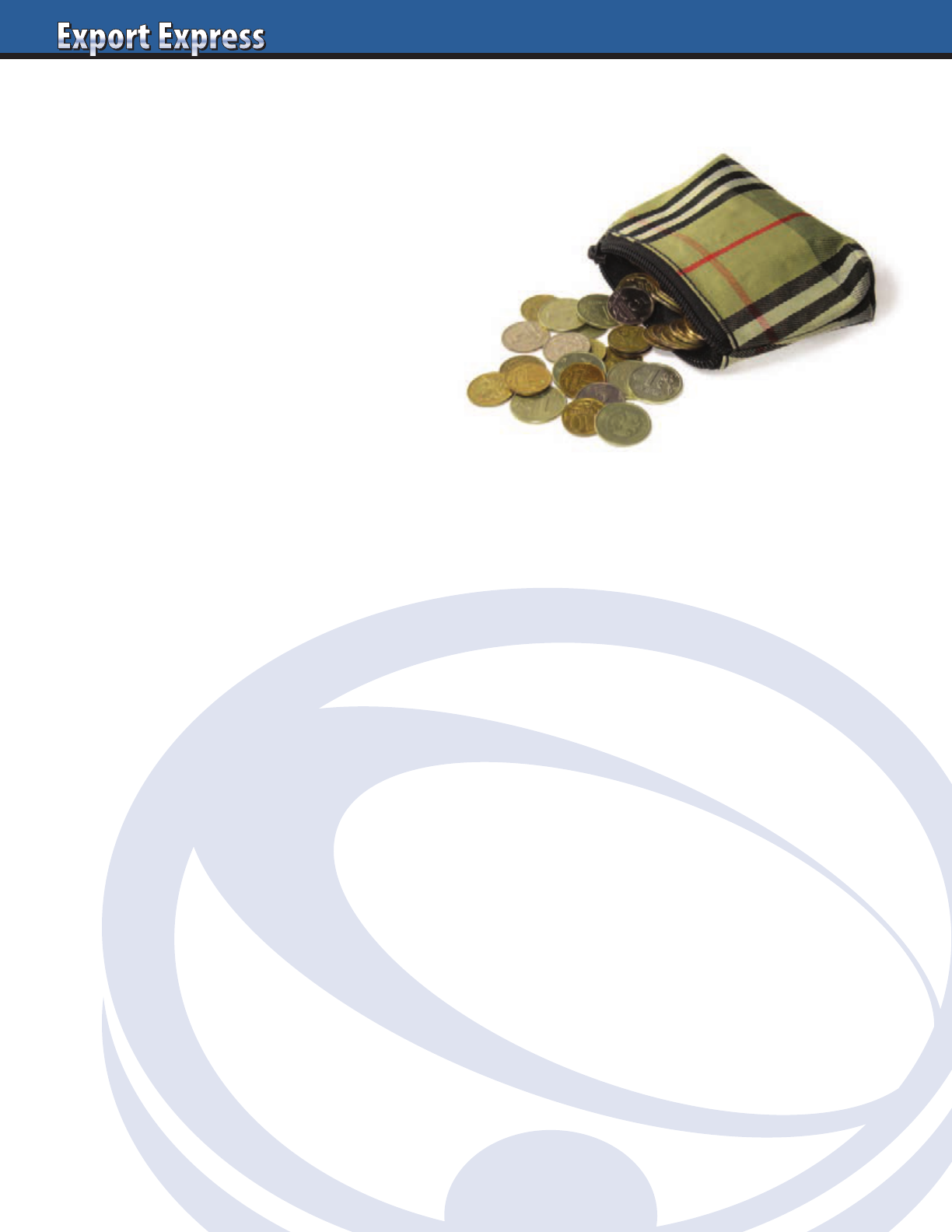
Stretching thin marketing budgets is a job
requirement for most Export Managers.
Listed below are “Ten Tips” for brand
building on a “Shoestring Budget.”
1. Tap into Government Export Programs
Many countries sponsor strong trade
organizations that can aid your export
development program. Exports translate
to jobs and most countries have well
established programs to facilitate the
sale of locally produced products. For
example, the USA Foreign Agricultural
Service will co-fund marketing
investments for small-mid size USA food
producers through their MAP programs.
German Sweets and GEFA, UBI France,
ICE (Italy), ICEX (Spain), Austrade
(Australia), and AG Canada serve as
valuable resources for local exporters.
These organizations often sponsor local
“Food Events” at leading supermarkets
in international countries. For example,
Austrade sponsored G’Day USA to
showcase Australian food producers to
USA consumers. These events are highly
publicized and normally feature a
relatively modest participation fee.
2. Leverage Relationships
with Global Retailers
Wal*Mart, Carrefour, Tesco & Costco
all maintain programs to ease the export
process for their current suppliers. This
usually involves direct consolidated
shipments with other local producers,
labeling assistance, and placement in a
special section in the international aisle
of their stores i.e. USA Foods, France
Foods, UK Foods etc. The immediate
benefit is the streamlined route to market
without payment of upfront local
marketing fees. This allows you to “Test
the Market” prior to a traditional market
entry with a local distributor and heavy
marketing support.
3. Joint Venture with Local Manufacturer
Another idea is to locate a local player
in your category in a country targeted
for expansion. You may be able to
offer a potential partner innovation in
taste/flavor or packaging to complement
his local expertise. A joint venture or
Co-Branding agreement can produce
revenues without significant
start-up funds.
4. Build Marketing
Costs into
Distributor Margin
Many
manufacturers
build an accrual
fund into their
distributor
margin
calculation.
Normally the
funding level
is around 10%
of sales, but can
range from 5 -
20% depending
on the category.
This creates a
fund for the
local distributor
to manage. The
accrual fund is created on a “pay as you
go” basis, with fund levels proportionate
to shipments. In this scenario, the
manufacturer usually provides a small
fixed sum to create a launch budget prior
to initial shipments
5. Free Goods May Fund Trade Marketing
Free goods may be used to offset the cost
of trade marketing programs, particularly
for established brands. This can be in
form of a 1 free with 10 purchase or
similar type of promotional events.
The benefit is that your budget can be
stretched as your cost of goods produced
is less than the wholesale cost.
6. Private Label
Retailers source quality products for their
private label at the lowest possible price.
This eliminates the need for marketing
investments. However, private label is
difficult if freight expenses are too high.
7. Foodservice Channel
Foodservice/Catering offers a “low
investment” route to market versus
the supermarket channel. Foodservice
usually requires less traditional brand
marketing support. Foodservice operators
look for tailored solutions with rebates
based upon purchase levels. A small
budget for SPIF’s (SPIF- special incentive
fund) can generate purchases from
independent restaurants.
8. Specialty Retailers
Each country has specialty retailers that
serve as alternate channels for your
brands. This could include diverse
customers such as Cost Plus World
Market, Trader Joes, Big Lots or Dollar
Tree in the USA. These retailers maintain
different approaches not dependent on
heavy manufacturer spending.
Their strategy is to offer different brands
(or sizes) versus traditional supermarkets
or mass merchandisers.
9. Co-promotion with other Brands
Retailers generate excitement through
Theme events around a group of
complimentary items or common cause.
This could involve participating in
Barbecue event with other Barbecue
related products:
Charcoal, Meat, Picnic Supplies, Drinks,
Pickles etc. Another example is a retailer
promotion celebrating their anniversary
or support of their favorite Charity
(Juvenile Diabetes, etc.). In many
countries, leading distributors sponsor
an annual event for all the brands they
represent. Don’t forget the country
specific promotions (G’Day USA)
mentioned earlier. In each case,
manufacturers pay for a portion of the
event as costs are spread out among all
brand participants.
10. “In & Out” Packs/Gift Baskets
These special packs can generate
incremental business without investment
in listing fees or shelf space. Examples
could include modular displays, trail
size shippers, or bonus packs with
free product or gift. Gift Baskets are
very popular during the Christmas
Holidays. This is a good vehicle for
“Fine Foods” brands to gain exposure
with gourmet consumers.
International Expansion – Shoestring Budget
28
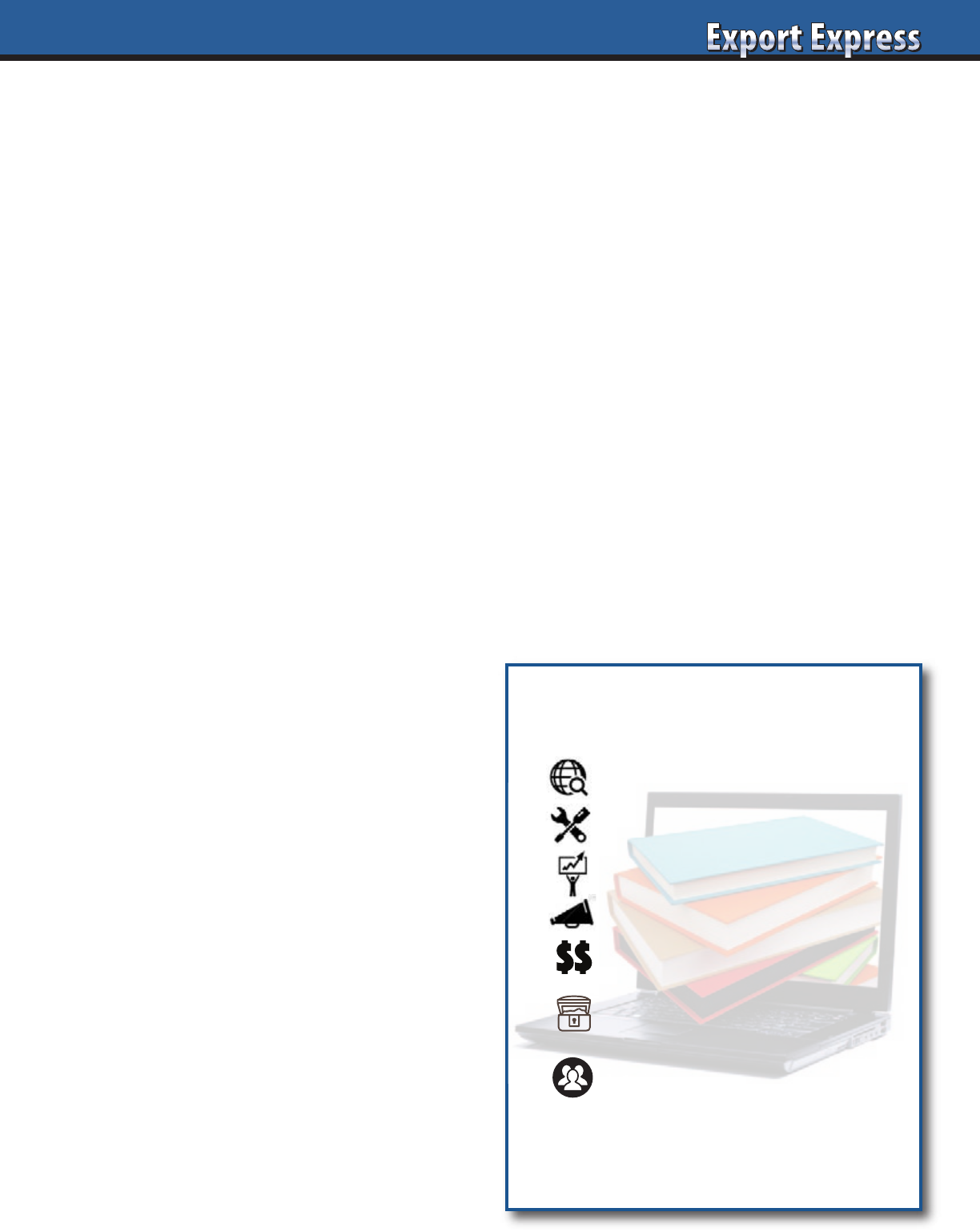
29
Slotting allowances, listing fees or as the Irish say “Hello” money
are all real estate rental fees charged in advance by retailers for
access to their limited shelf space. Many retailers assign their
buyers “budgets” for this type of incremental fee income. Store
owners seek to obtain maximum productivity from each shelf
facing and fixed entry fees are a tactic to gain immediate income
from new products without an established sales history. At the
end of the day, it’s a cost of doing business. Our objective is to
allocate as little money as possible to listing fees to redirect
our investments to consumer awareness and trial generating
activities. Recapped below are Export Solutions’ Ten Tips
on minimizing listing fee payments.
1. Exclusivity
Some large retailers will waive listing fees in order to achieve
first in the market status with an exclusivity arrangement.
Normally, this extends for three to six months. Beware, you
may upset other customers who become “locked out” during
the exclusivity period.
2. Pay Fees Over One Year
This approach reduces your initial outlay and also increases the
likelihood that the retailer will keep your product on the shelf
for at least one year. This may also allow you to structure the
payment as a percent of case cost versus a “lump sum” payment.
3. Free Goods
Our net cost of “Free Goods” may range from 30-50% of a
product’s retail price to the consumer. The retailer recoups his
listing fee when the product is sold. Some retailers are hesitant to
accept this option, as a slow moving brand may force him to wait
to receive his money.
4. Approach “Non-Slotting” Fee Retailers First
Every country includes retailers and channels that do not
demand slotting fees. Create a success story with these customers
first. Your track record may validate the larger investment in
paying the fees at a bigger account or success may help you
negotiate more favorable terms.
5. Create “All Inclusive” Annual Plan
Ultimately, the retailer has many “profit centers” to reach their
internal financial targets. Customers respect a solid, year one
plan, with investments in their other programs like advertising,
sampling, shelf rental and display. You may secure your product
listings as part of your annual agreement.
6. Negotiate Reductions – Multiple Items
My experience is that many retailers have published standard
prices for listing fees. However, net payment often depends on
your distributor’s clout. Big distributors, representing
multinational’s and a wide variety of brands know the difference
between what is requested and what is really paid on high profile
brand launches where the retailer needs the new brand to be
competitive. The most frequent “discount” is receiving a reduced
fee for multiple items: example, paying a full listing fee on first
two items and receiving authorization for two extra items as part
of a group listing.
7. Retailer Entertainment
Most countries still permit buyers to socialize with suppliers.
The cost of a few tickets to a high profile sporting event is far less
than most listing fees. A VIP plane trip to view your factory or
your category in a “resort” country is another way to gain access
to the shelves without writing a big check.
8. Higher Everyday Margin
Total category margin is a key assessment metric for most buyers.
Some may consider a lower listing fee, if your brand delivers a
margin higher than the category average.
9. Distributor Contribution
Some “hungry” distributors may cover or co-fund listing fees.
There are options to “case rate” fixed fees into the distributor
margin calculation. Ultimately, distributors benefit from
increased sales and margin contribution from a new product
listing. However, many are reluctant due to short term contracts.
Most maintain policies related to brand owners retaining
100 percent responsibility for listing fees and consumer
marketing activities.
10. Beg! Claim Poverty
Buyers are human and realists too. They may “bend” in their
demands if they like your brand and know that you represent
a small company. Long term distributors can request the
occasional “favor” from a friendly buyer. Most retailers have
programs to provide “low cost” chances to entrepreneurial
new or local suppliers.
Ten Tips: How to Minimize Listing Fee Payments
Create Your Own
Export Library
All Guides available free at
www.exportsolutions.com
in the Export Tips section.
Distributor Search Guide
Export Handbook
Selling to USA Handbook
Distributor Management Guide
Finance & Logistics
Export Treasure Chest
My Favorite Templates & Forms
People Power
Strong Teams Build Great Brands

Searching for New Distributors?
Export Solutions makes life a little easier for more than 3,000 export managers.
Our time saving distributor database serves as a “helper” for identifying more
than 9,200 qualified, local brand builders in 96 countries.
“Select Your Distributors,
Do Not Let Your Distributors Select You”
www.exportsolutions.com
Local Experts
Distributor Coverage
Asia: 2,030
Europe: 3,139
Latin America: 1,574
Middle East: 937
USA/Canada: 1,464
Category Experts
Distributor Coverage
Beverage: 1,691
Candy/Snack: 2,713
International Food: 3,276
Health & Beauty: 1,800
Natural Food: 837
Country Experts
Distributor Coverage
German Brands: 648
Italian Brands: 1,397
UK Brands: 682
USA Brands: 1,189
Search by Country, Category, or Country of Origin
30
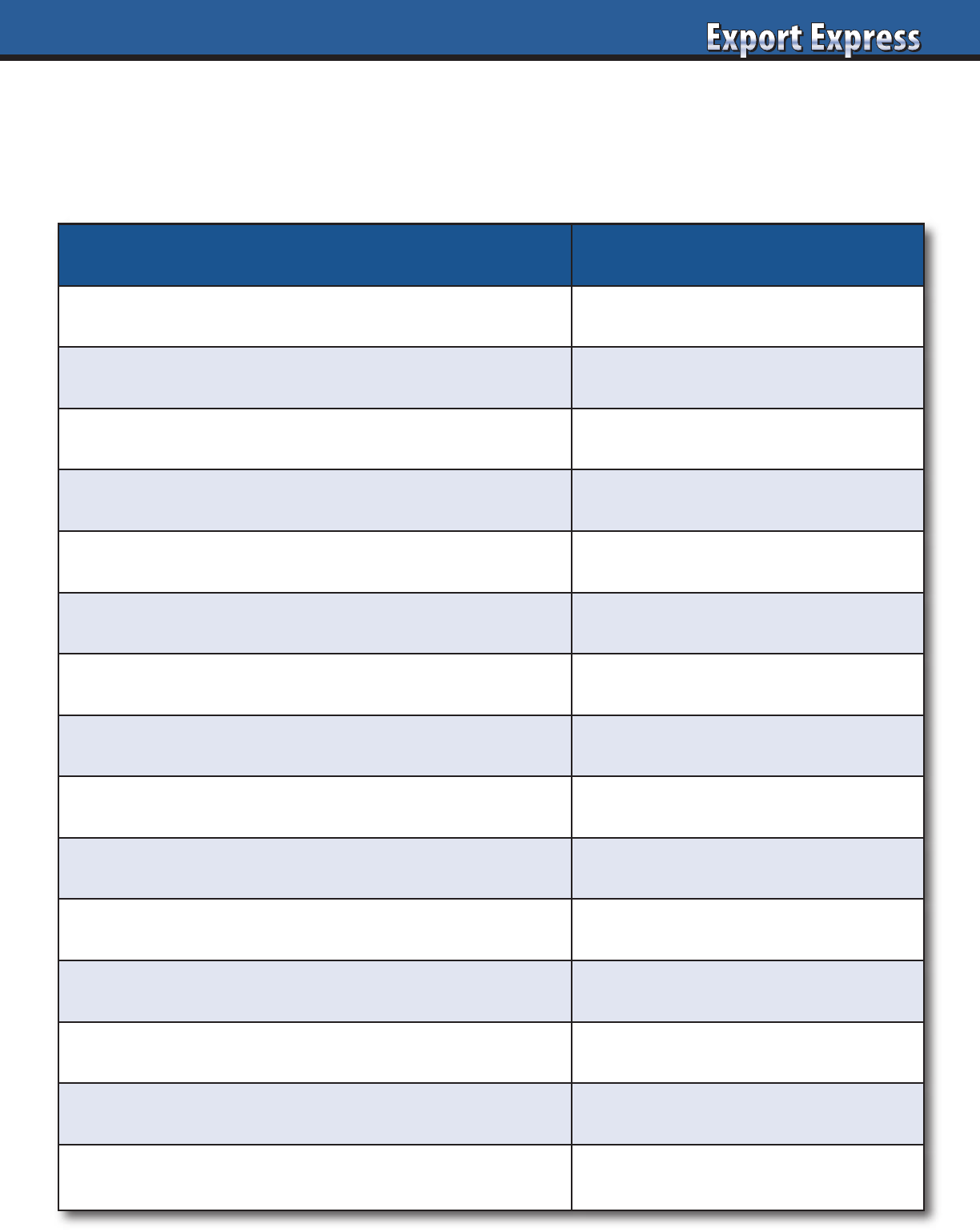
31
Distributor Capability Assessment
Export Solutions established 15 assessment criteria to identify “Best in Class” performers as well as “under
achievers.” Many distributor relationships extend 10 years or more. Is your distributor network still a “good fit”
for your current business requirements? Template can also be used as New Distributor Reference Check form
.
Assessment Criteria Rating: (10 = Best)
Category Expertise/Critical Mass
Focus/Time Dedicated to your Business
Joint Business Plan Development, Execution, Delivery
Alignment with Brand Owners Vision. Relationship.
Cost to Serve (fair margin, extra costs)
Assortment/Shelf Space
Promotion Creativity, Effectiveness, and Efficiency
Key Account Relations (Senior level, buyer)
Leadership/Owner (engaged & committed to us?)
Brand Manager (seniority, clout,creativity)
Multi Channel, Multi Regional Coverage
Financial Stability, Payment Record
Supply Chain Management & Forecasting
Problem Solving: rapid response?
Sales Results versus Budget, Market, Category (CY, PY, 3 Years)
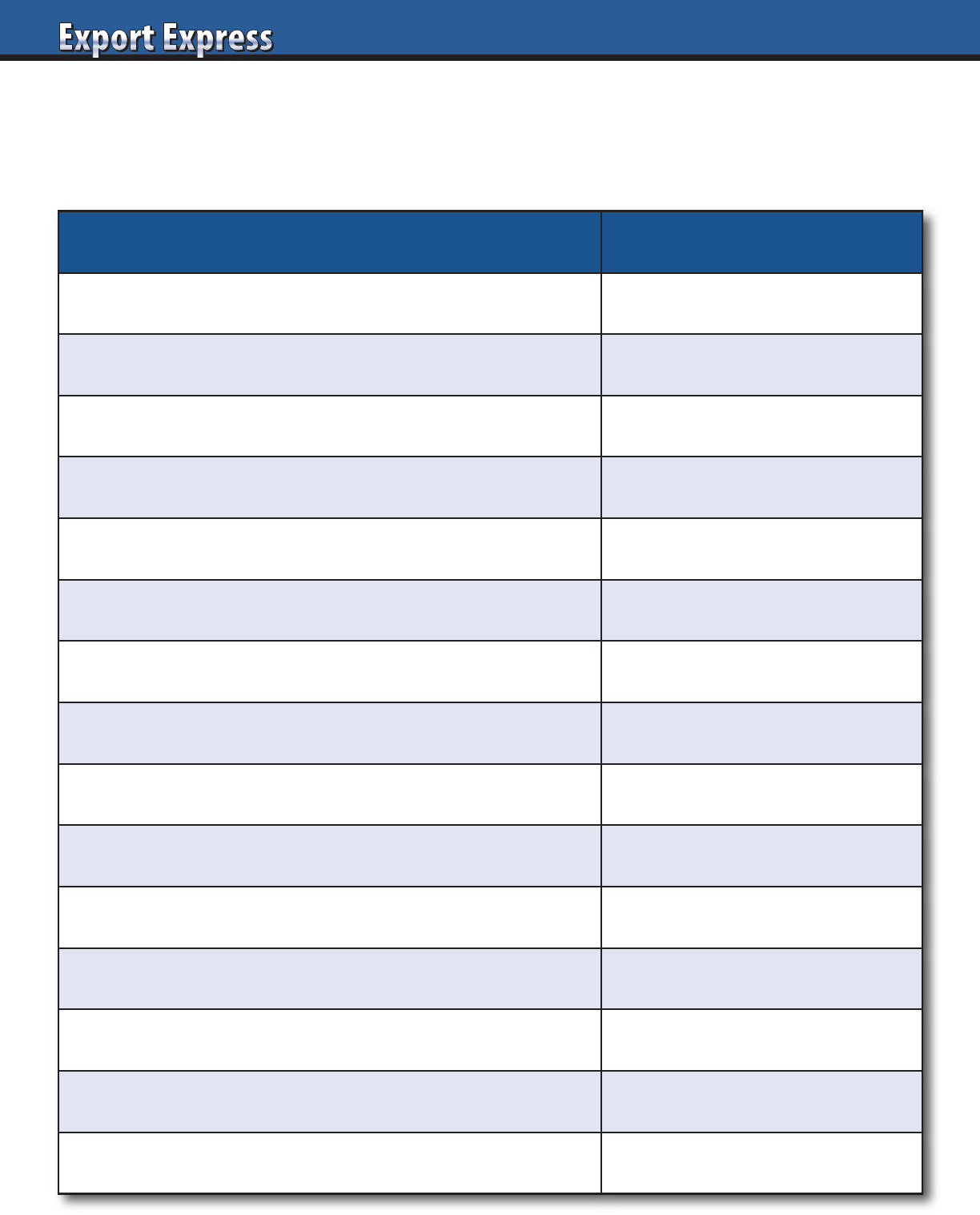
32
Customer Relationship Assessment
All distributors claim strong relationships with their biggest customers. Below is Export Solutions’ template
for evaluating distributor key account relationships. Best way to evaluate distributor relationships? Your
company’s market share and volume growth at the customer versus the balance of the market!
Assessment Criteria Rating: (10 = Best)
Distributor viewed as an important supplier to the retailer/buyer
Open to bringing brand owner to customer meetings.
Ability to schedule buyer meetings outside the office.
Can negotiate discounted listing fees and other program costs.
Pricing: access to price coordinator. Ability to make changes.
Shelf: access to decision maker. Space in excess of market share.
Merchandising Flier/Catalog: Ability to get prime feature space.
Relationship/access to retailer owners, senior executives.
Problem solving: rapid response? Emergency orders etc.
Payment terms.
Access to retailer movement data.
Category captain or “advisor” for my category.
Vendor awards?
Knowledge of retailers systems. “How to get things done.”
Sales results versus overall market and retailers internal growth.
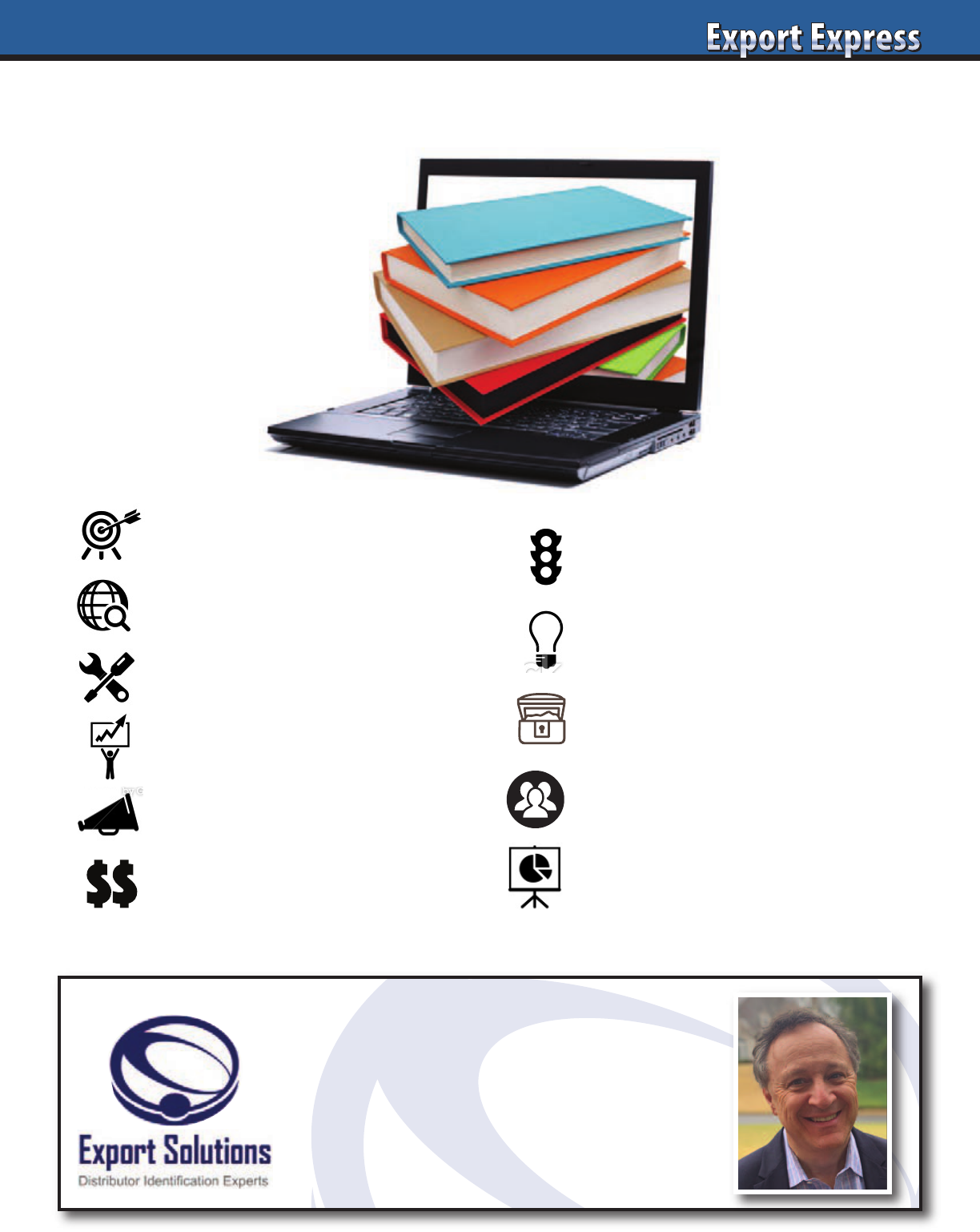
33
Create Your Own Export Library
Looking for a fresh point of view for your
next event or training workshop?
Contact Greg Seminara at
greg@exportsolutions.com
All guides available free at www.exportsolutions.com.
Export Strategy Guide
Distributor Search Guide
Export Handbook
Selling to USA Handbook
Distributor Management Guide
Finance & Logistics
300 Tips for
Export Managers
Idea Guide:
New World – New Business
Export Treasure Chest
My Favorite Templates & Forms
People Power
Strong Teams Build Great Brands
New Distributor
Cooperation Model
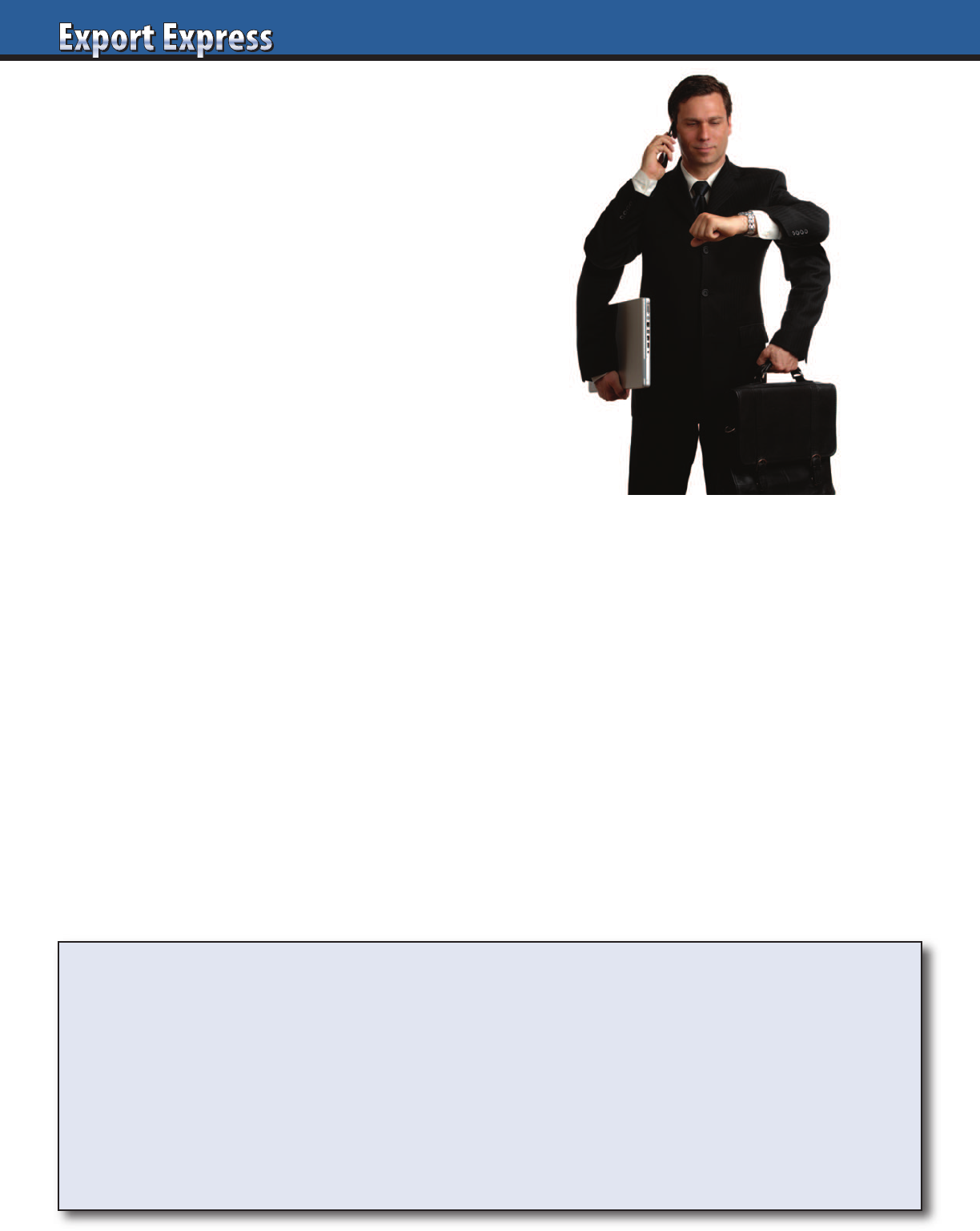
34
Brand owners demonstrate significant due diligence in selecting
a new distributor. This includes lengthy negotiations with the
distributor’s owner and development of a marketing plan with
their senior management. Typically, you sign a contract and then
they introduce you to “John” (example), a 30 year old Brand
Manager who will be your first point of contact. In reality, most
brands are in daily contact with “John,” but do little up front to
evaluate, select, or define “John’s” role in building your business.
Role Definition
Normally, the title of Brand Manager is assigned to your primary
point of contact at the distributor. This person serves as the central
switchboard of all elements regarding your brand’s business at the
distributor. Problem solving, logistics issues, promotion planning,
and chasing payments are just a few of the everyday tasks assigned
to the Brand Manager.
Can your Brand Manager “Move the Organization?”
A key issue is the seniority of the person assigned to your brand.
Are you working with a top manager who has a close relationship
with the CEO? Or are you working with a junior person who works
hard, but basically maintains the flow of paper? In most cases,
I look for a person that commands the respect of the distributor
organization. Many distributors have multiple brand managers,
all lobbying for share of voice from the team. “Best in Class” Brand
Mangers possess the tenacity to motivate the sales organization to
achieve the results and priorities required for your brand.
Workload
Brand Manager workload is always a key issue. A Brand Manager
may be shared by 3-5 brands. This approach may be acceptable if
you are a niche brand and you are achieving desired results. On the
other hand, it is frequently preferable to secure a dedicated Brand
Manager who spends 100% of their time working on your business.
Exporters need to recognize that Brand Managers cost money, so
your contact’s workload is directly proportional to the income
generated by your brand.
Marketing Versus Sales Background
Brand Managers typically come equipped with a marketing degree.
This background is helpful if your brand requires a “classic
marketer,” combining creativity with deep focus on the consumer.
In other situations, Brand Managers with sales expertise prove to be
adept at participating at key account sales calls and understanding
the best methods for working with the sales force.
Compatibility
Do you like your Brand Manager? Most companies spend
extensive time working with their distributor Brand Manager
contact. You must be aligned and develop a healthy working
rhythm. This can be difficult, as you share common objectives, but
report to separate bosses and perhaps different incentives. In many
cases, a brand owner develops a strong personal relationship with
their brand manager. This can be unhealthy if they like their
contact, but let this relationship continue even if results are poor.
People Power: Next Steps
A strong Brand Manager serves as your “Brand Advocate” at the
distributor. Export managers need to include assessment of their
potential Brand Manager as part of the Distributor selection
process. Ask “Who will be my day to day contact? Why? Other
choices?” Avoid “paper pushers” that are nice people and can
complete forms but offer few new ideas, complain about being
overworked and fail to capture the attention of the sales force.
Winning Brand Managers bring energy, new ideas, and results to
your brand. Recognize Brand Managers who maintain the skill set
to take your annual plan, add creative ideas appropriate for their
market, and drive the sales organization to deliver the results!
People Power: Distributor Brand Managers
Greg’s Guidance: Export Strategy 2025
3 What are your Lessons Learned?
3 What are your Core Competencies?
3 Which countries offer exceptional growth for your category?
3 How much is your company willing to invest? Marketing, People, Promotion
3 What will our organization need to do differently?
3 What are realistic measures and benchmarks?

35
For many exporters, eighty percent or
more of their distributor interaction filters
through a distributor brand manager.
If you are lucky, this energetic university
graduate completes your reports and
serves as a capable advocate with the
distributor sales team. Brand owners
frequently demonstrate excessive loyalty
to their brand managers as local heroes
that rescue the export manager from periodic emergencies. In reality,
the distributor brand manager is a “middle man,” communicating with
the generals that deliver the results at key account and store level.
International brand building is a team sport. Winners are companies that form strong
relationships with all functional leaders in a distributor organization. Web meeting tools
like Zoom and Teams facilitate easier direct linkage with key distributor personnel.
Discussed below are Export Solutions’ tips for moving “Beyond the Brand Manager”
to accelerate your business to the next level.
1. Key Account Managers (KAMs) Are the Power Players
KAMs are the major account experts and own the buyer relationships. Direct feedback
from them provides valuable, realistic insights. Most distributors have weekly KAM
meetings that are worthwhile to join to discuss a key priority. Roll up your sleeves
and become visible with the sales people “carrying the bag.”
2. Field Sales Teams Control the In-Store Show Room
Typically, a distributor’s store-level merchandising team reports to the sales director, a
few “hand-offs” away from the brand manager. Retail stores represent the place where
export dreams are translated to cash in the register. Field managers juggle a large basket
of priorities for their sales army. Fund a sales contest and you will build loyalty.
3. Follow the Money to the CFO
How well do you know the CFO at your distributors? The finance department is the
cash hub, approving orders, handling payments, and guiding the distributor’s financial
health. Establish a relationship with the CFO when all is well, as it will pay dividends
when a financial crisis erupts.
4. Meet the Digital Team
E-commerce development represents a growth initiative everywhere. Many distributors
hire a small, young team. Create “First One in Benefits” by partnering with this group at
this early stage of team evolution.
5. Treat Distributor CEO as a VIP
CEOs are busy, stretched by brand owners, customers, employees, and shareholders.
Find ways to engage the distributor CEO in your business. Consider quarterly Zoom
dates and extend an offer to join your distributor advisory board. Invite him to visit
your company headquarters for a first-class experience and a meeting with your CEO.
A favorite part of any market visit is “management by walking around.” I love to visit
every department. Smile to everyone, handing out a small gift with your company logo,
and say thanks for your help. Today’s travel guidelines limit these trips, but challenge
us to adapt this practice in a virtual way.
We appreciate our brand managers, but must remember that our partnership service
agreement is with the entire distributor, not just one person.
Good luck!
Strategic Services
Contact Us for
Export Solutions
1. Identify Best in Class
Distributors: 96 Countries
2. Best Practices
Export Strategy
3. Distributor Management
Workshops
4. Export 101:
Let’s Get Started
5. New Market
Prioritization
and Launch Plan
6. Personal Distributor
Introductions:
96 Countries
7. Walmart International
8. Distributor Contracts,
Margins, and Fees
9. Meeting Speaker
10. International
Strategy Expert
Strategic Services
Contact Us for
Export Solutions
1. Identify Best in Class
Distributors: 96 Countries
2. Best Practices
Export Strategy
3. Distributor Management
Workshops
4. Export 101:
Let’s Get Started
5. New Market
Prioritization
and Launch Plan
6. Personal Distributor
Introductions:
96 Countries
7. Walmart International
8. Distributor Contracts,
Margins, and Fees
9. Meeting Speaker
10. International
Strategy Expert
www.exportsolutions.com
Greg Seminara
“Spend Time Selling to Distributors versus Searching for Distributors”
Beyond the Brand Manager
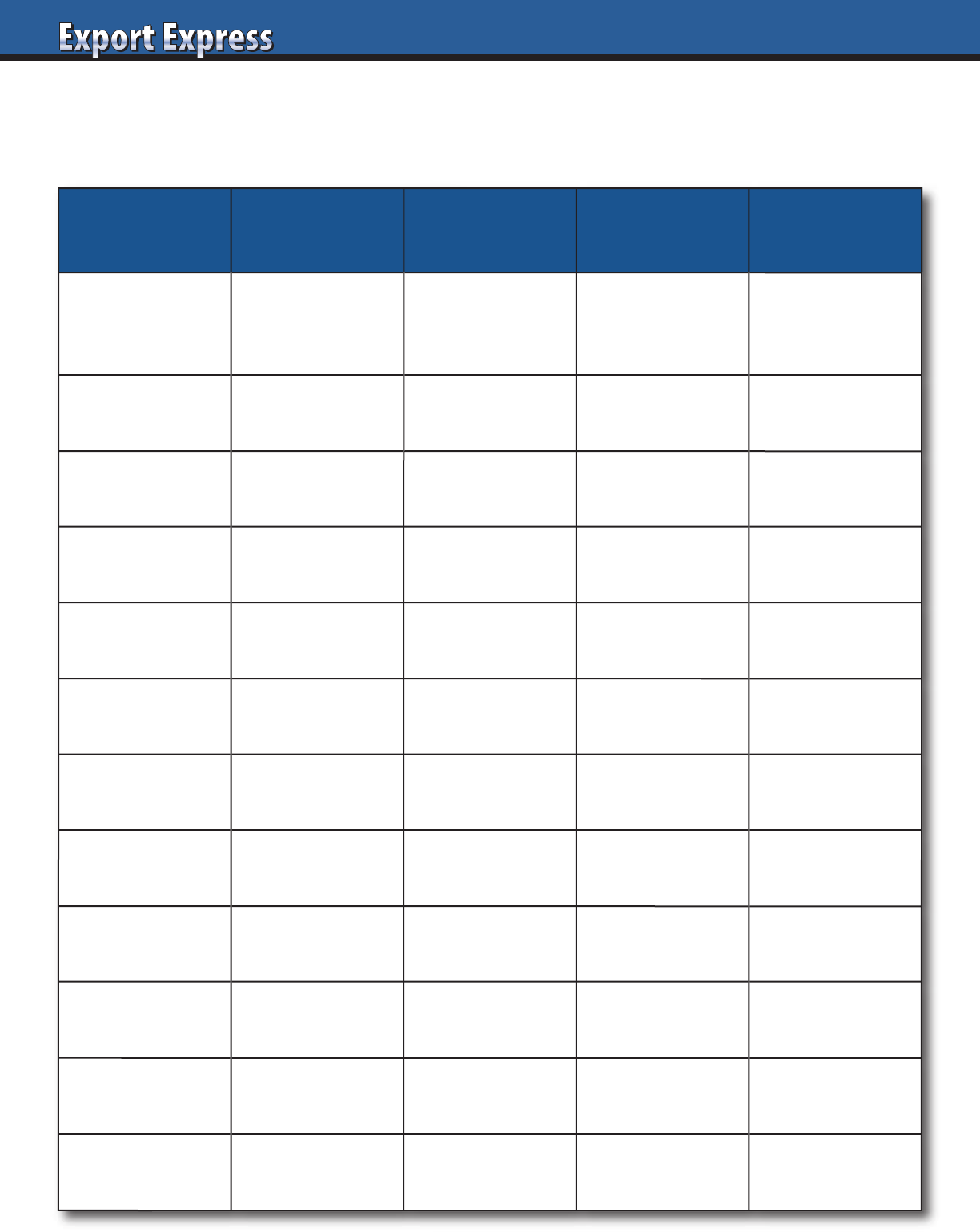
36
Who Is My Team?
Big distributors feature large teams with strong capabilities.Manufacturers want to know who is their
functional contact and how much time do they dedicate to my business?
Function
Distributor
Contact
Title
Email
Phone
(Mobile)
Senior
Management
(Owner/MD)
Marketing
Manager
Sales Manager
Brand Manager
Field Sales
Manager
Digital Marketing
Finance
Supply Chain
Purchasing
(order placement)
Accounts Payable
Compliance/
Registration
Customer
Service Manager

37
Successful distributors may represent twenty companies
or more, with each brand shouting for attention. Exporters
should identify, develop, and applaud a Brand Champion
at each of your distributor partners. A Champion is
someone who is passionate about your brand and values
leadership results for your company as something deeper
than just selling another case. At some point your company
and distributors made a commitment to work together.
This decision was based upon a sense of shared company values and belief that your brand
could make consumers happy and the distributor money. As time progresses, this initial
enthusiasm fades, and partners forget the fundamental reasons why they decided to
work together.
Recently, I was in the Middle East for two distributor search projects. We hitched a ride back
to our hotel with the “purchaser” of imported brands for one distributor. This person had
not participated in our meeting and maintained oversight for at least 40 companies. We
exchanged pleasantries in the car, then introduced our brand. This manager immediately
exclaimed, “That’s my baby” and spouted out movement figures, category insights and
sales by store for each of our core SKUs. His spontaneous enthusiasm was based upon
the fact that he felt personally responsible for the success of our brand in his country, even
though we had never met him before.
Listed below are Export Solutions’ ideas for promoting the importance of Brand Champions
at each of your distributors.
1. Who is Your Brand Champion?
The champion is not just your assigned brand manager who you deal with everyday.
I prefer senior people of influence who originally supported the idea of partnering with
your company. The ideal champion is the distributor CEO or National Sales Manager. Brand
development is a “team” sport and you need someone who can inspire the entire group.
2. How Do You Develop a Champion?
As with sports, it takes years of training to support natural ability. Invite the Brand
Champion to your corporate headquarters. Organize factory tours and meetings with the
global brand managers. Introduce him to the CEO or head of international and treat him to
a meal at your home. Spend time with your Brand Champion visiting stores in his country
to secure his ideas to take your business to the next level.
3. A Champion Delivers Year After Year
A Champion is defined by leadership results. A true champion is not a “one year wonder.” It
is someone with a long term commitment and personal investment in your brand’s success.
4. How Do You Treat A Brand Champion?
Champions thrive on recognition. Give them an award as “Distributor of the Year” or for
serving as a member of your company’s Brand Champions club. Invite them to serve on
your company’s “Distributor Advisory Board,” if you have one.
5. Brand Champion Responsibility
Challenge the Champion to deliver exceptional results. The Brand Champions are “true
believers” and are aligned with your vision. Many distributor sales teams are filled with
Brand Champions. Distributors have favorite brands, based upon the prestige of the
brand and personal characteristics of the people working for the manufacturer. One
of my mid-size clients has many Brand Champions. How? They offer a great brand,
inclusive corporate culture, and some of the nicest, most genuine people you will ever
meet. Brand Champions are essential for your brand to elevate from just playing in the
export game to category leader.
www.exportsolutions.com
“Spend Time Selling to Distributors versus Searching for Distributors”
Greg Seminara
404-255-8387
Strategic Services
Export 101: Let’s Get Started
Export Solutions provides practical
advice on creating your export
strategy. We’ve helped 100’s of
small-mid size companies gain new
sales from overseas markets.
Our added value is our sales oriented
approach and extensive contacts
with international distributors.
Contact Us for Export Solutions
Who is Your Brand Champion?
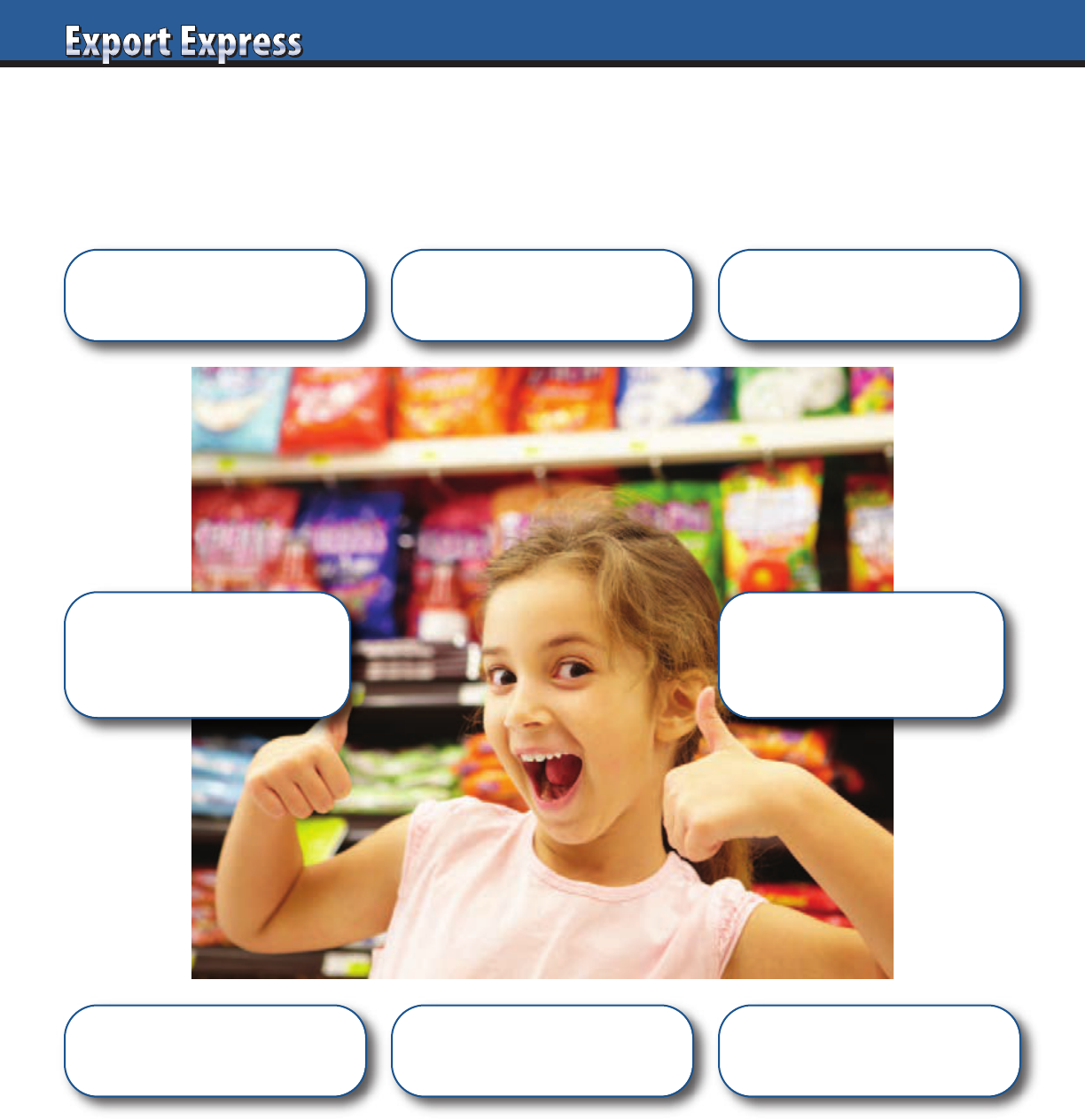
38
We’ve Got You Covered!
Distributor Database Coverage
Confectionery & Snack:
2,713 Distributors
Ambient Beverage:
1,691 Distributors
Gourmet & Ethnic Foods
3,276 Distributors
USA Importer/Distributor
:
598 Distributors
Middle East
937 Distributors
12 Countries
Asia
2,030 Distributors
17 Countries
Latin America
1,574 Distributors
Europe
3,139 Distributors
9,200 distributors – 96 Countries
Subscribe now at www.exportsolutions.com
“Spend time Selling to Distributors versus Searching for Distributors”

39
Your new product launch is a big deal, comparable to the birth of
a child. The first days are critical if you want to raise a “healthy
brand.” Listed below are Export Solutions’ ten tips for launching
your company for the first time to a new distributor or
expanding through a new product introduction.
Firm Calendar
Distributor and brand owner should align on a “firm calendar.”
This includes dates for sales materials development, launch
meeting and key account calls. All dates are dependent on arrival
and customs clearance of the first order. No product, no meeting!
Get Ready
Allow adequate time for printing of point of sale materials
and development of key account presentation. In some cases,
translation or local adaptation of brand owner supplied tools
may be required.
Memorable Meetings
I still remember motivational meetings with themes around
boxing and magic. Create new memories with a special theme or
an external speaker. Off-site meetings contribute to making your
launch special, with an added sense of commitment. Have fun!
Mandatory Attendance
The distributor CEO, brand manager, and export manager must
all attend and have speaking roles. Best is to have one meeting
with sales and merchandising teams together. However, in some
cases, a follow up meeting may be required. Invite logistics,
finance, and customer service people to make it a “team effort.”
In-Store Objectives
Establish clear measures for in-store presence. This includes
shelf positioning, space allocation, pricing, and off-shelf
merchandising. Share a photo. What qualifies as a “good store”
versus a “bad store?”
Frequently Asked Questions
Prepare a list of potential questions and logical responses.
Role play with the team. Share a printed one pager with
sample answers to tough questions.
Samples, Samples, Samples
Provide generous quantities of samples for all distributor
employees to enjoy and take home. Prepare recipes if your
brand is a food product. Samples are your best advertisement.
Personal Goals
Each team member should have personal goals for your launch.
For a key account sales person, this could be acceptance of the
core product lineup. A retail merchandiser could be assigned a
target of a specific number of stores with displays or eye level
shelf placement. For the launch, focus on implementation goals
versus case shipments.
Key Account Calls
In many countries, large supermarket chains dominate sales.
Develop a personal strategy for each key account. What are the
buyers internal goals? How do we fit with the chains consumer
base and plans? Which chain “push” programs can we
participate in? Schedule a “lead call” with an easier key account
to get feedback that will help you with a tougher buyer. Invite
the export manager or distributor MD to participate in the sales
call if it will help.
Audit
Schedule a retail audit of stores to coincide with the expected
retail availability of product. Bring other people from the brand
owner’s company and have 2-3 teams auditing the market
against a specific set of goals. Visit secondary cities, not just the
stores around the distributor’s office. Recognize that conditions
will not be perfect and celebrate progress to date.
New Product Launch: Ready, Set, Grow – Ten Tips
Need more information? Visit www.exportsolutions.com.
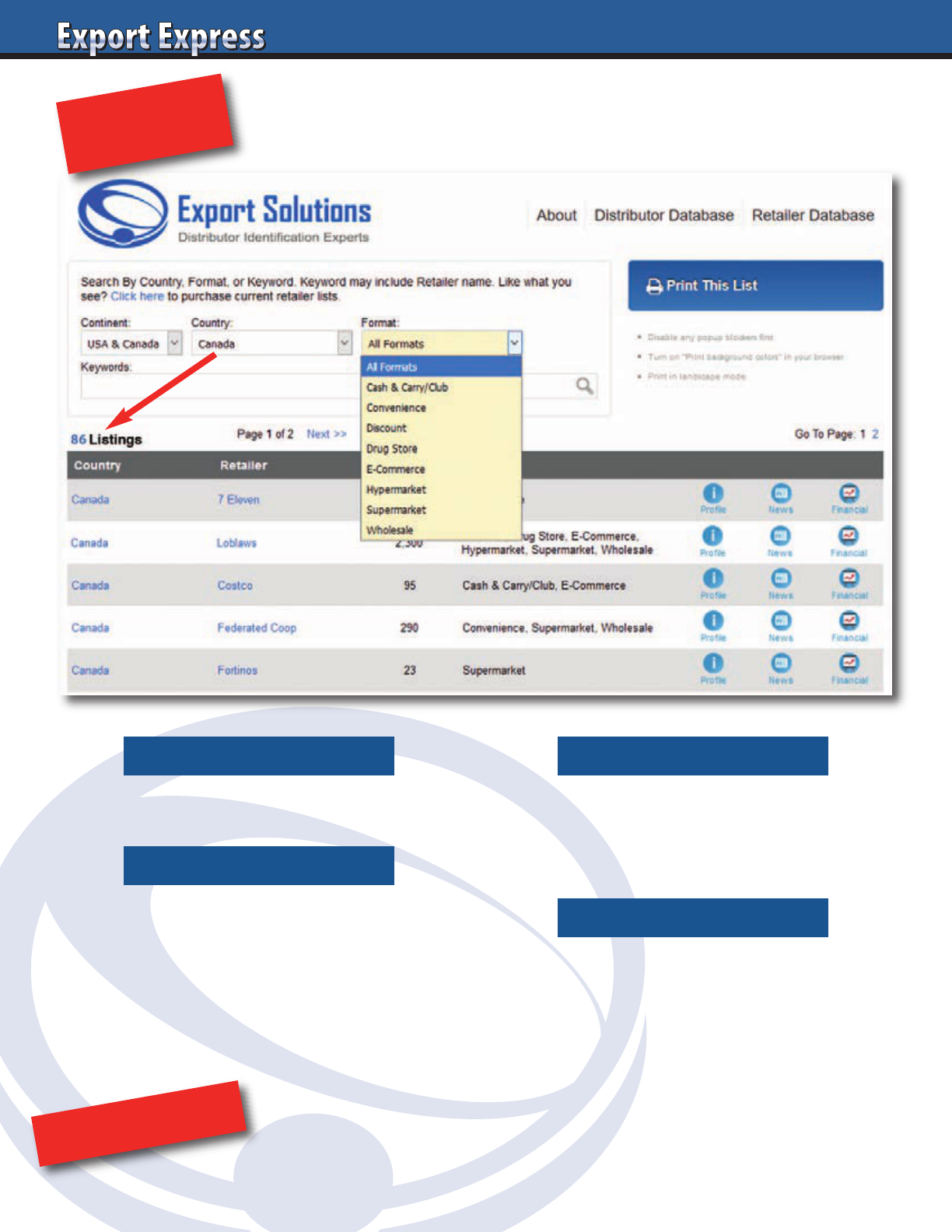
Coverage: 96 countries and 2,700 retailers
Supermarket
Convenience
Drug Store
Natural Food
Club, Cash & Carry
Supplying profiles, store counts, formats,
news and info for Top 100 international
retailers plus all overseas branches
Example 1: Who are supermarket
retailers in Canada?
Example 2: How many stores does Loblaws
operate by banner, in Canada?
NEW!
ORDER NOW!
40
Search by Retailer NameSearch by Country
Combo Search
www.exportsolutions.com
Search By Format
Retailer Search Made Simple
Canada Example
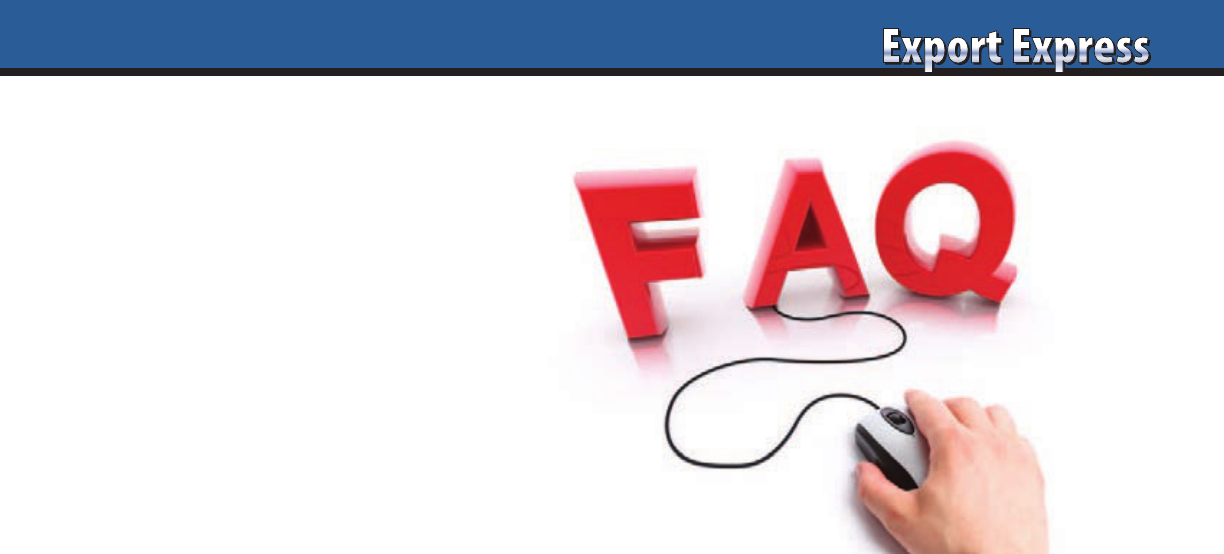
41
Why did you create the retailer database?
Export managers dedicate a lot of time
to researching countries, retailers and
preparing business plans. A standard
KPI measure is tracking product listings
for key customers. I believe that our
industry could benefit from a global
retailer database to instantly locate
retailers and their store counts in
96 countries. The retailer database
is a logical extension of our leading
distributor database which has helped
more than 3,000 companies build export
sales during the last 10 years.
What is your geographic coverage?
96 of top 100 GDP countries worldwide.
This includes most Asian, Middle Eastern,
and European countries. Our database
covers every country in the Americas.
In Africa, we cover South Africa.
What is your format coverage?
Excellent coverage of chain supermarkets,
hypermarkets, clubs, cash and carry,
and convenience formats. Solid initial
coverage of drug stores, natural food
stores, and e-commerce channels.
Our database does not cover
DIY/hardware, toy, office, liquor,
or sporting goods channels.
Retailer database: featured info
Profile – Retailers profile and link to their
internet home page.
Formats – Retailer’s stores segmented
by format and banner.
We track supermarkets, hypermarkets,
cash and carry, convenience stores,
discounters, drug stores, natural food
stores, and e-commerce retailers.
News – Latest retailers’ news. In some
cases (Asia), we substitute a link to the
retailer’s latest promotional flyer.
Financial – Many leading retailers are
publicly traded. A link is provided to
their latest financial results. We do not
offer estimated financial information for
privately held or family owned retailers.
How is your coverage of global retailers?
We offer total coverage for top 100 global
retailers. This includes all of their
branches and banners. Searchable!
Use filters to research Walmart, Costco,
Carrefour, Tesco, Metro, Casino presence
by country. Database covers retailer’s
total store outlets as well as a breakout
by banner and format.
What can I use the retailer database info for?
• Obtain an instant snapshot of an
average of 24 retailers per country
for 96 countries.
• Track presence of global retailers like
Walmart, Carrefour, and Metro AG.
• Create country specific listing maps
where distributors measure brand
authorization by retailer.
• Conduct home office based
international category reviews and price
checks from retailers’ e-commerce sites
(not all retailers).
• Prepare annual reviews and reports
with up-to-date information on leading
retailers and channels.
Searchable
The database offers filters allowing you to
search by country, format, or retailer name.
You can also use a combination of filters for
your research.
Can I get a free sample of the retailer database?
Sure! Check www.exportsolutions.com for a
complete profile of United Kingdom retailers.
Do you provide retailer’s annual sales
or market share information?
Accurate annual sales information is
available through the financial link for
publicly traded companies. We do not
provide estimated financial information for
privately held and family owned retailers.
Channel blurring occurs between
supermarket, convenience, e-commerce,
and even natural food operators. We do
not provide market share due to difficulty
to accurately isolate and define channel
market share information, particularly
with so many privately held retailers.
How accurate is the retailer data?
Export Solutions’ retailer database is
updated weekly, so information is highly
accurate. Retailer names, web sites, and
formats rarely change. This makes the
database 99% accurate at the company
level. New stores open every day,
resulting in store counts that may be
95% accurate. We intend to update
store counts on a regular basis.
How much does retailer database access cost?
An annual subscription to the retailer
database is $975. This supplies one year,
unlimited access to more than 2,700
retailers in 96 countries. Special offers
available for our distributor database
customers. Note: special pricing for
government trade organizations.
How do I access the retailer database?
Visit www.exportsolutions.com and click
the retailer database page. You can place
a subscription or individual continent
(i.e., Europe) into a shopping cart.
Register and check out via credit card.
The process takes two minutes and we
automatically send you an invoice.
About Export Solutions
Export Solutions was founded in 2004
and is based in Atlanta, Georgia in the
USA. Export Solutions serves as a leading
provider of business intelligence to the
food and consumer goods industries.
Our distributor database covers 9,200
distributors in 96 countries and has
been used by more than 3,000 clients.
Our Export Express newsletter has a
circulation of 9,900 and is viewed as an
important source of insights, strategies,
and templates for international
development. www.exportsolutions.com.
FAQ’s – Retailer Database
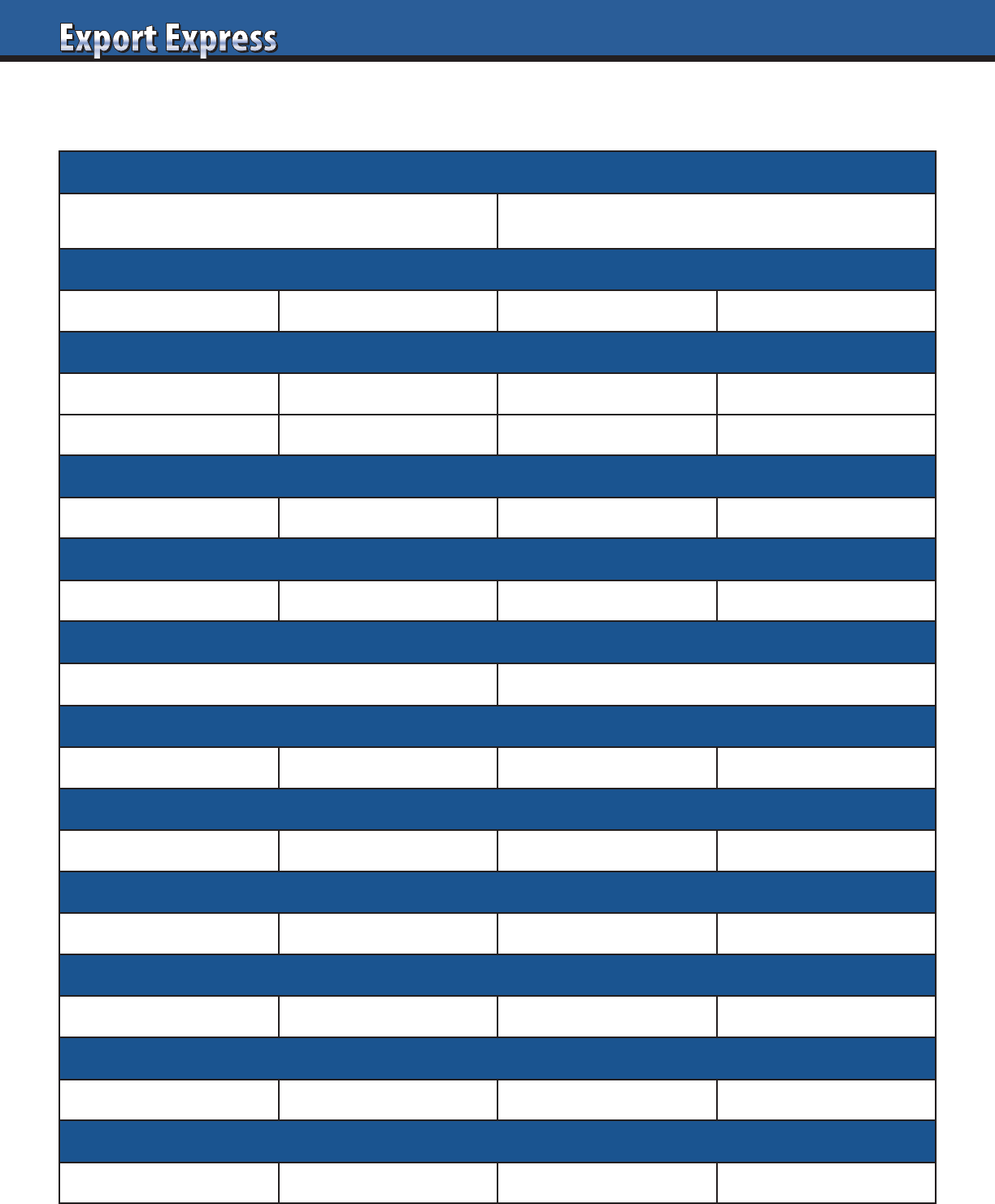
42
Category Review Template* – page 1
(Estimate: Source info from Store Checks, Retailers, Nielsen, Euromonitor)
*Note: please provide your best estimate
Category Sales: Total, all channels, all customers
Retail Value _______________________________ Wholesale value___________________________
Category Sales: Percent by Segment
Segment A _________ Segment B _________ Segment C _________ Segment D _________
Category Sales: Percent by Channel
Supermarket _________ Convenience _________ Discount _________ Pharmacy _________
Wholesalers _________ Cash & Carry _________ E Commerce _________ Other _________
Category Peak Seasonality
Summer _________ Winter _________ Holiday _________ None _________
Category Sales: Top 4 Customers
Customer 1 _________ Customer 2 _________ Customer 3 _________ Customer 4 _________
Category Sales: Percent National Brand versus Private Label
National Brand _________ Private Label _________
Category Sales: Percent by Brand
Brand A _________ Brand B _________ Brand C _________ Brand D _________
Category Sales: Percent by Region
Region A _________ Region B _________ Region C _________ Region D _________
Category Sales: Market share (value) Top 4 Brands
Brand 1 _________ Brand 2 _________ Brand 3 _________ Brand 4 _________
Category Sales: Market share (units) Top 4 Brands
Brand 1 _________ Brand 2 _________ Brand 3 _________ Brand 4 _________
Category Sales: Top 4 SKU’s/Items
Item 1 _________ Item 2 _________ Item 3 _________ Item 4 _________
Category Sales: Top 4 Pack Sizes
Pack Size 1 _________ Pack Size 2 _________ Pack Size 3 _________ Pack Size 4 _________
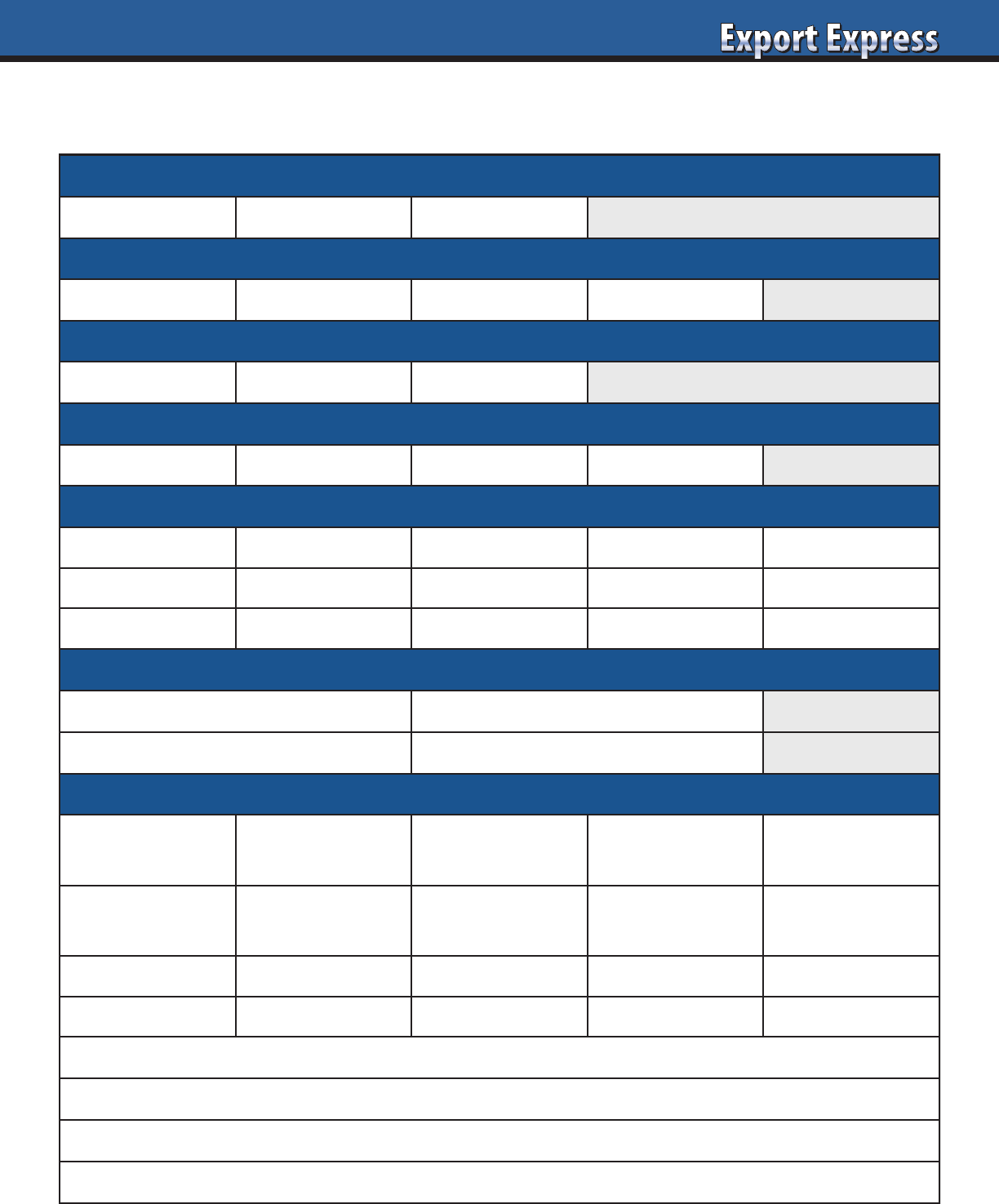
43
Category Review Template* – page 2
(Estimate: Source info from Store Checks, Retailers, Nielsen, Euromonitor)
*Note: please provide your best estimate
Category Size (circle)
Mass Standard Niche
Category Sales Growth (circle)
High 10 % + Average: 3-5 % Flat Declining
Buyer Interest (circle)
High Medium Low
Category Development (circle)
New High Growth Mature Declining
Retail Prices: Top 15 SKU’s/Items at number 1 customer
Item 1 _________ Item 4 _________ Item 7 _________ Item 10 _________ Item 13 _________
Item 2 _________ Item 5 _________ Item 8 _________ Item 11 _________ Item 14 _________
Item 3 _________ Item 6 _________ Item 9 _________ Item 12 _________ Item 15 _________
Shelf Space: Provide Photo’s/Planograms
Typical Section Size: Supermarket # Items: Average supermarket
Adjacent Category 1 Adjacent Category 2
Merchandising (circle)
Typical Percent
Price Reduction
10% 20% 30% Other
Store Flier
Participation
weekly monthly seasonal never
Category displays weekly monthly seasonal never
Special Packs Bonus Packs Pre-Price Free Gift Other
What activity drives incremental category sales?
Category Insights: What’s hot?
Category Insights: What’s not selling well?
Category Summary/Other Insights
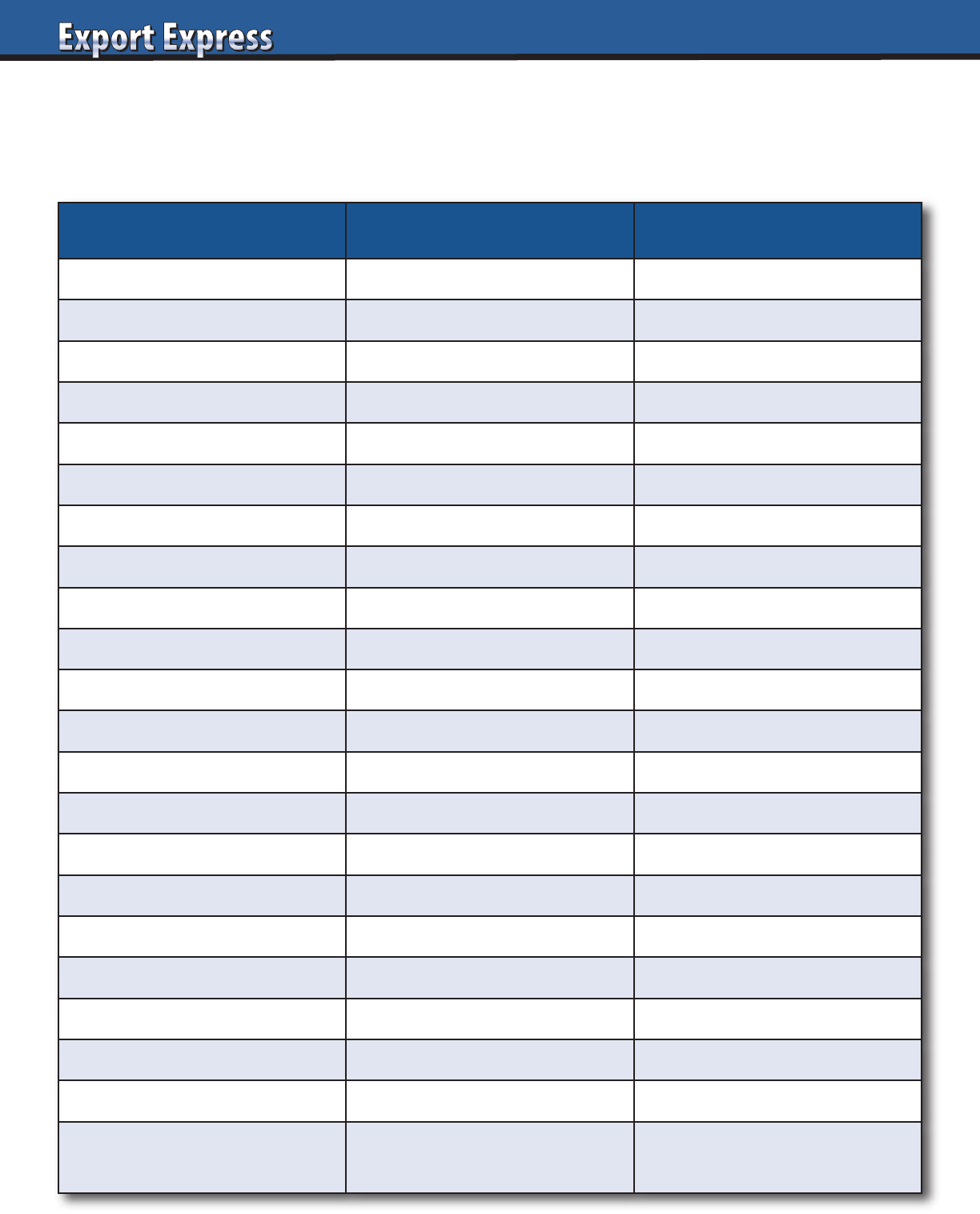
44
Distributor Supplier Relations
Managing the New Normal
Actitivity Old School New School
Customers Mass Supermarkets Omni Channel
Mom: Whats for? Dinner Breakfast, Lunch
Sales Team Over 50’s Under 30’s
E-Commerce Channel Niche Mass
Assortment Limited (supermarkets) Unlimited (e-com.)
Retail Conditions Store visits Web shop checks
Business Management Sales targets Profit targets
Distributor Expertise Generalists Specialists Category, Channel
Business Manager Brand Manager Idea Generator
Check Point Conferences Telephone calls Teams/Zoom
Overseas Supplier Visits Monthly/Quarterly Quarterly/Annually
Brand Presence Shelf Visibility Page 1 results (e-com.)
Distributor Logistics Delivery by case Delivery by unit (e-com.)
Recipe Ideas Your brand only Total meal solutions
Training Annual meeting Webinar (anytime)
Consumer Marketing Mass via multi media Targeted and digital
Brand Information Email to distributors Online portal
Pricing: Distributor Calculation “Closed Book” “Open Book”
Trade Shows Visit in person Hybrid:Virtual and in person
Foodservice Restaurants Home Delivery
Forecasts/Reports Monthly “Live,” real time
Results-Expectations Achieve your Objective Achieve your Objective
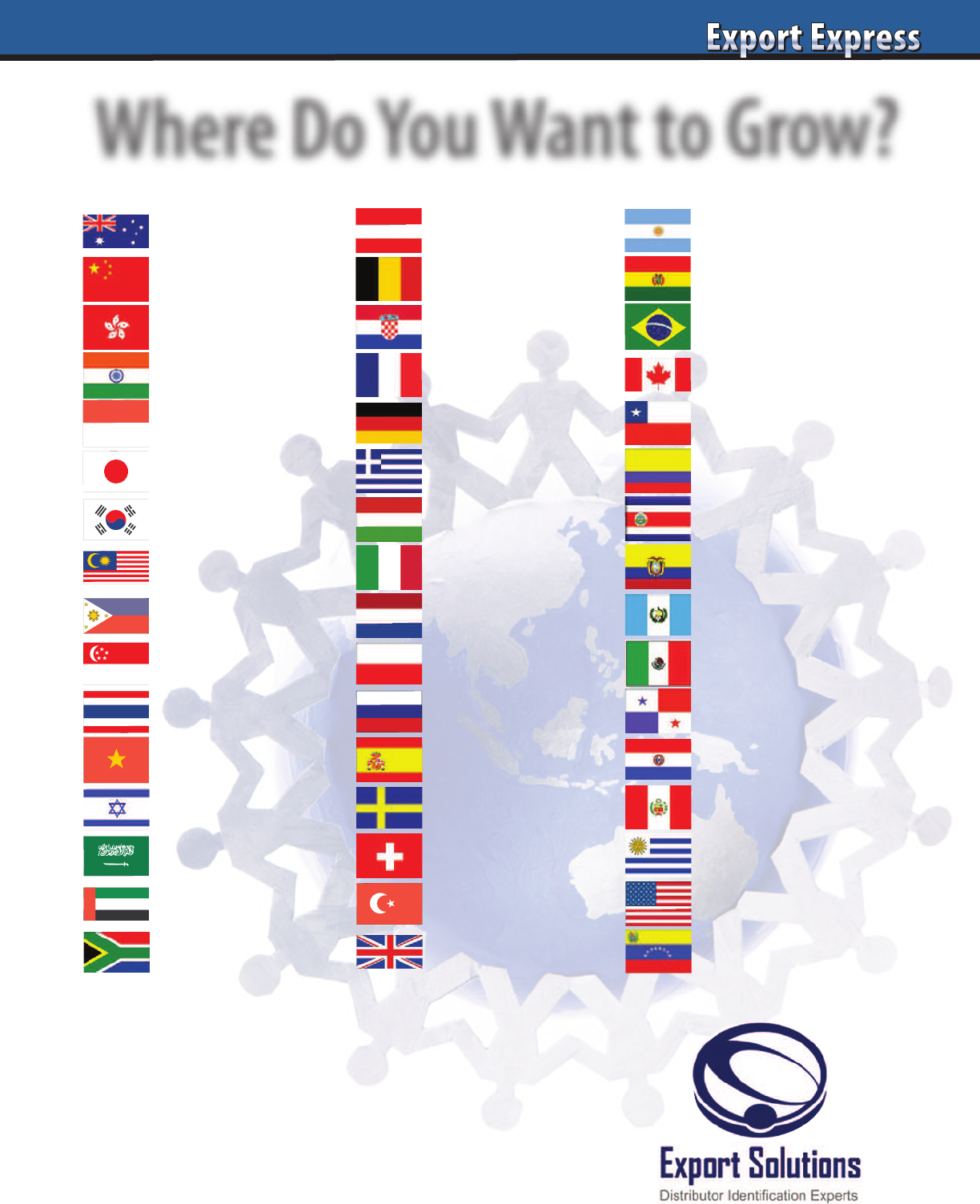
45
Where Do You Want to Grow?
Asia/Africa/Middle East
Europe Americas
Use Export Solutions Database
to fill in the Gaps in your
Export Coverage Map
Australia – 274 Distributors
China – 160 Distributors
Hong Kong – 177 Distributors
India – 109 Distributors
Indonesia – 78 Distributors
Japan – 176 Distributors
Korea – 146 Distributors
Malaysia – 128 Distributors
Philippines – 109 Distributors
Singapore – 163 Distributors
Thailand – 94 Distributors
Vietnam – 49 Distributors
Israel – 61 Distributors
Saudi Arabia – 115 Distributors
U.A.E. – 195 Distributors
South Africa – 106 Distributors
Plus 14 more countries
Austria – 68 Distributors
Belgium – 85 Distributors
Croatia – 78 Distributors
France – 125 Distributors
Germany – 188 Distributors
Greece – 90 Distributors
Hungary – 68 Distributors
Italy – 105 Distributors
Netherlands – 155 Distributors
Poland – 90 Distributors
Russia – 108 Distributors
Spain – 157 Distributors
Sweden – 103 Distributors
Switzerland – 100 Distributors
Turkey – 82 Distributors
U.K. – 274 Distributors
Plus 19 more countries
Argentina – 61 Distributors
Bolivia – 52 Distributors
Brazil – 135 Distributors
Canada – 205 Distributors
Chile – 92 Distributors
Colombia – 82 Distributors
Costa Rica – 73 Distributors
Ecuador – 55 Distributors
Guatemala – 61 Distributors
Mexico – 193 Distributors
Panama – 63 Distributors
Paraguay – 57 Distributors
Peru – 82 Distributors
Uruguay – 52 Distributors
USA – 598 Distributors
Venezuela – 38 Distributors
Plus 14 more countries

